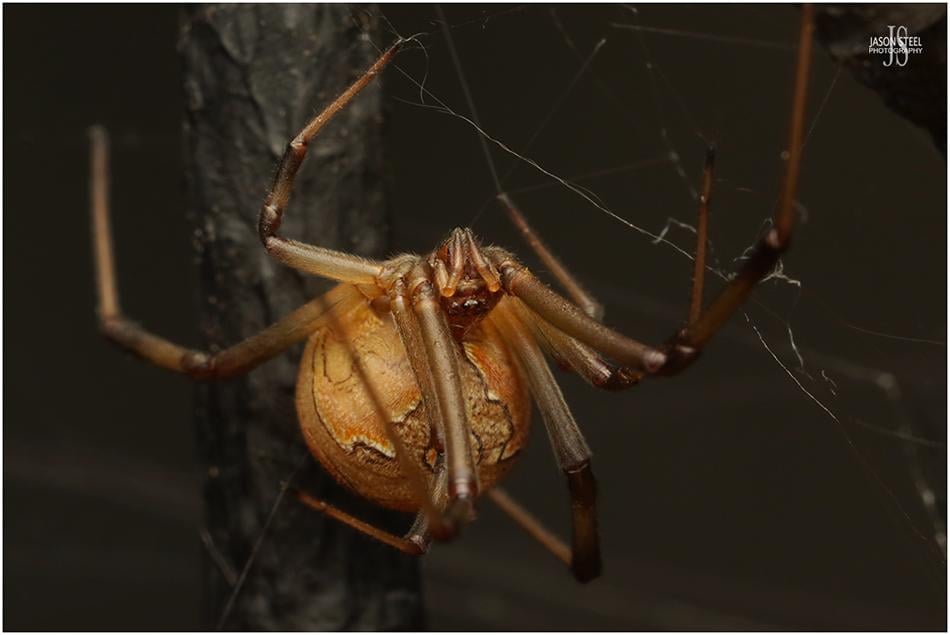
10mm gravid female Brown Widow found in Paphos, Cyprus, May 2025.
Brown Widow / Geometric Button Spider / Brown Button Spider (Latrodectus geometricus)
The Brown Widow was originally discovered in South America, although many sources claim that the species originated from southern Africa. The Brown Widow's range now covers many pantropical and subtropical areas around the world. Although this species does turn up in the UK very occasionally, as an accidental stowaway amidst imported fruit and other goods, it is not established anywhere in the UK. The Brown Widow tends to be slightly smaller and usually far lighter in colour than other Black Widow species. Females typically grow to a body-length of around 7-10mm, whilst the far smaller males only reach 2-4mm. The appearance of the Brown Widow is highly variable but usually ranges from light grey to light brown in colour, with a black & white geometric pattern on the dorsal side of its abdomen, and annulated legs. Darker specimens do also regularly occur though and these can easily be mistaken for juvenile specimens of other Black Widow species, in countries where both species occur, such as the USA. The Brown Widow still possesses the trademark hourglass marking, typical of Latrodectus species, on its underside. However, instead of it being bright red, as with most of its Black Widow cousins, the Brown Widow's hourglass marking is usually orange, or occasionally yellow. The hourglass markings can also occasionally be red or even cream coloured too.
Are Brown Widows dangerous?
Unlike bites from other Black Widow species bites from the Brown Widow are not usually considered to be dangerous to humans. Although Brown Widows still possess a very potent neurotoxic venom, that effects nerve endings, the yield of that venom is believed to be far lower and the amount of venom injected during any bite is usually considerably less than other Latrodectus species. It is believed that the lower volume of α-latrotoxin delivered during a bite that makes this species far less dangerous to humans than the bites from Black Widow spiders, as of yet there are no confirmed human deaths resulting from the bite of the Brown Widow. The effects of a bite are usually confined to the bite area and in 2/3rds of cases result in just localised pain, sometimes severe, lasting for 1-2 days, and minor swelling lasting for 1-4 days. Sensitivity to venom varies from one person to another though and very occasionally some bite victims can experience the more severe reactions of Latrodectism that are usually associated with the more dangerous Black Widow species. One such case in the USA, back in 2008, resulted in a previously healthy, adult male victim needing hospitalisation, experiencing symptoms including severe pain, cramps, nausea & vomiting, and fasciculations in the pectoral and quadriceps muscles. LINK These symptoms are extremely rare following a bite from the Brown Widow but can begin from just 15 minutes after the bite, to several hours later. The severity of the symptoms continue to increase for several hours. In severe case bites from the Brown Widow can be successfully treated with the antivenom typically used for treating Black Widow bites, Antivenin Latrodectus mactans. This antivenom is of equine origin. LINK 1 LINK 2
The expanded distribution of the Brown Widow is, like Steatoda nobilis, believed to be a fairly recent adaptation of the species, and DNA testing of Brown Widow specimens from around the world shows very little variation between specimens, suggesting that regardless of where they are now found they all originated fairly recently from the same source. The Brown Widow is now classed as an invasive species in many areas and has long been suspected as being responsible for displacing some Black Widow species in their native countries, particularly the USA. In a recent study, published in January 2023, it was confirmed that the Brown Widow, Latrodectus geometricus, is definitely displacing Florida’s Southern Black Widow, Latrodectus mactans, and California’s Western Black Widow, Latrodectus Hesperus. The studies revealed that Brown Widows have twice the fertility potential as Southern Black Widows. In experiments comparing development, it was shown that sub-adult Brown Widows grew faster and matured earlier, relative to Southern Black Widows. The Brown Widow does not just predate the Black Widow because of prey scarcity, but the bold Brown Widow actively hunts the shy Black Widow, preferring it to other spider species as prey.
Like other Black Widow species the Brown Widow is not an aggressive spider towards humans and even when you invade its web its reaction is usually to either retreat to its place of hiding or drop to the ground and play dead. Bites to humans usually only occur as a result of the spider being accidentally trapped against human skin. Adult female specimens have also been known to defend their egg-sacs. The much smaller male of the Brown Widow Spider usually poses no risk to humans at all as its fangs are too small to penetrate most human skin.
Latrodectus geometricus produce very distinctive spiky egg-sacs. The only other Latrodectus egg-sac, that I'm aware of, that can sometimes be mistaken is the slightly spiky egg-sac of the Asian Black Widow species, Latrodectus elegans. Research published in 2019 proved that the egg-sacs of Latrodectus geometricus have antibacterial properties that protect the eggs within from bacteria or fungal growth. - LINK
One Latrodectus geometricus egg-sac can contain as many as 120-150 eggs. Fertilised female Brown Widows produce an average of 23 egg-sacs during their lifetime. By comparison the egg-sacs of the Western Black Widow (Latrodectus hesperus) can contain around 300 eggs, but the female spider will only produce up to 10 egg-sacs in her lifetime. Most other species of Black Widow do not produce the distinctive spiky egg-sacs produced by the Brown Widow, and it is these unique egg-sacs that make this species easy to identify in the field. Fertile eggs of the Brown Widow usually take 14-21 days to hatch, but the spiderlings may remain hidden away within the egg-sac for a period ranging just a few days to another month after hatching. It's not uncommon for the Brown Widow to create several egg-sacs at a time, with as few as just one or more of those actually containing fertile spider eggs. The newly hatched spiderlings are very pale with no visible patterning. They will moult before leaving the egg-sac. By their second moult the spiderlings start to display the typical hourglass marking on their underside. Initially this marking is white and can be quite difficult to see. After emerging from the egg-sac the spiderlings can sometimes stay close by in a group for some time, during which time cannibalism is common. They eventually disperse by ballooning in the wind on threads of silk.
The Widow spiders get their name from the behaviour sometimes associated with Black Widow Spiders, where the female spider may eat her male partner during, before, during or after copulation. This practice has been observed with several Latrodectus species including the Brown Widow. Where it was once thought that this was an aggressive act on the part of the female, studies of the Brown Widow now lead arachnologists to believe that this behaviour is similar to the matriphagy observed with other species of spider, but now on the part of the male, as he offers himself as a sacrifice to the female for the growth and development of his offspring now inside the female. During copulation the male has frequently been observed to rotate himself 180 degrees and place his abdomen directly in front of the jaws of the female.
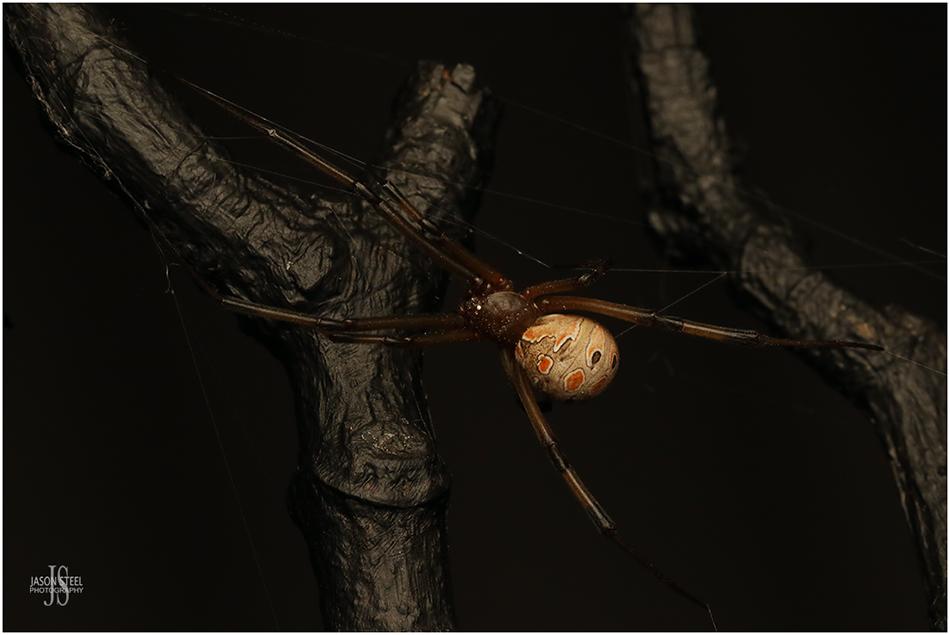
8mm adult female Brown Widow found in Paphos September 2023.
Brown Widows in Europe
The rapid spread of the Brown Widow in recent years has now reached Europe, and Latrodectus geometricus is established in both Cyprus and Turkey.
Before I searched for Latrodectus geometricus in Cyprus myself my research lead me to to discover that in Duncan McCowan's 2014 book "60 Cypriot Spiders" the Brown Widow was already referred to as the most common Latrodectus species in Cyprus. The author also claimed Latrodectus geometricus had been well established for years around a play area at Larnaca's tourist beach. Latrodectus geometricus was officially recognised as an established species and listed in the "Spiders of Cyprus" catalogue in 2019, where it mentions Latrodectus geometricus as being first cited in 2002 by Knoflach & Van Harten. LINK
Stefan Sollfors, who runs Eurospiders.com, reported finding many Latrodectus geometricus around his hotel in Fig Tree Bay, Protaras, as early as August 2009. LINK
Blogger, Alice Karayiannis, added several images of Latrodectus geometricus that she had photographed around her home in Nicosia, Cyprus, on 6th June 2013. LINK
More recently, a photo was shared on Facebook of a Latrodectus geometricus that was taken in the Ypsonas and Agios Silas area, near the city of Limassol, in the south of Cyprus, on 8th August 2023. - LINK
On 10th November 2023 an image of a Latrodectus geometricus was shared in the Biodiversity of Cyprus Facebook group. The photo was taken in the town of Pegeia, which is situated mainly on the steep slopes of the coastal hills inland from Coral Bay in Paphos. - LINK
On 11th November 2023 another image of a Latrodectus geometricus was shared in the Biodiversity of Cyprus Facebook group. This photo was taken in the town of Ammochostos, in Famagusta, situated on the east coast of Cyprus, which is at the other end of the island to Paphos. The adult female Latrodectus geometricus had built its web, and rapidly produced several egg-sacs, in an artificial Christmas tree that had been left out on the veranda of a house. - LINK
As of November 2023 iNaturalist includes around 20 records of Latrodectus geometricus from across Cyprus. Whilst most records of Latrodectus geometricus in Cyprus are from coastal locations this species is spreading further inland and some of the recent records of Latrodectus geometricus have come from inland locations too, including the capital city of Nicosia. - LINK
On the 13th November 2023 I was informed by a resident of Tala that he had recently found three Brown Widow spiders, with egg-sacs, on his property. Tala is a large suburban village 6 km north of Paphos. - LINK
Latrodectus geometricus are also believed to now be established in Turkey. One record of a male Latrodectus geometricus was added to iNaturalist, from the Merkez district of northern Turkey, from 13th July 2023. - LINK
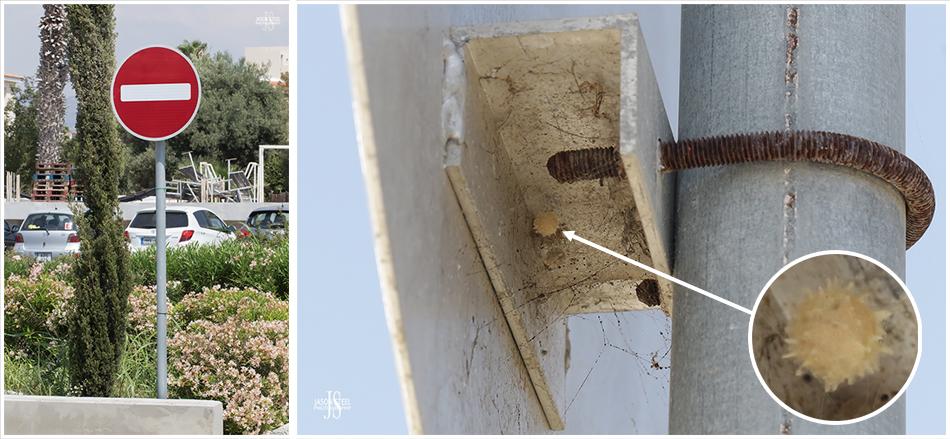
The distinctive spiky egg-sacs of the Brown Widow are common on the back of signposts in Paphos. Photo taken September 2023.
My search for Latrodectus geometricus in Cyprus, in September 2023
Like other Latrodectus species, Latrodectus geometricus is a nocturnal species and usually hides itself away during the daytime. The easiest way to locate them during the daytime is to look for their webs containing the distinctive egg-sacs. The egg-sacs of Latrodectus geometricus are about 8-10mm in size and are a creamy-white colour. These egg-sacs are covered in tubercles or spikes, making them instantly recognisable. Before I began my search in Cyprus I had heard from various eye-witnesses informing me that Latrodectus geometricus usually build their webs near the bottom of the walls of buildings. I was told that Latrodectus geometricus could also often be found in rubbish bins and other small enclosures. Away from human habitation they can sometimes be found in log-piles, under rocks or even on low branches of trees and bushes.
During my 10 day stay in Cyprus during September 2023 one of the key species that I focussed on finding was the Brown Widow. On my very first night it took me no time at all to discover my first Latrodectus geometricus in Paphos. The first specimen was discovered in its web, built above a hanging plant at the rear of our hotel. It was an adult female with 4 egg-sacs. On my first night alone I was able to find a total of 36 Latrodectus geometricus egg-sacs within tangle-webs. It was immediately very obvious that Latrodectus geometricus were not just well established in Paphos but they were extremely common and easy to find, from one end of the town to the other. Throughout the next 10 days I spotted 50+ Latrodectus geometricus spiders, or webs containing Latrodectus geometricus egg-sacs. At this point I stopped counting. This species is largely synanthropic in the Paphos area and some of the places I was able to find them included: living under the handles of large recycling wheelie bins, on the inside of rubbish bins, on the back of street signs and street lights, on iron railings and fences, at the base of flower pots, on the underside of sunbeds, on hanging flower baskets, around window frames and window ledges etc.
Latrodectus geometricus is highly adaptable though and as I travelled away from Paphos I was also able to find them far away from human habitation in low branches of trees on the coastline too. Anyone living in the southern half in England will be familiar with how common and widespread Steatoda nobilis has become around homes and other buildings. Latrodectus geometricus are proving to be just as adaptable as Steatoda nobilis when it comes to colonising new areas and reproducing. When searching for Latrodectus geometricus in Cyprus they can usually be found in many of the same types of location where one would expect to find Steatoda nobilis in the UK.
Although Latrodectus geometricus seems to prefer to build its web in sheltered locations it isn't unusual to find the webs built on iron railings where they are exposed to the scorching sunlight for much of the day. Latrodectus geometricus are prolific breeders and most webs I found contained between 3 and 6+ egg-sacs. On close inspection of the webs containing egg-sacs it was quite common to discover not only the adult female Brown Widow, tucked away in a silken retreat within the web, but also the tiny male sitting at the edge of the web guarding the egg-sacs too. The location of the webs varied considerably in their height from the ground. Most webs were built anywhere between 50 - 300cm above the ground, but a small number of webs were built at ground level. It was also very common to find several webs built so closely together that they touched the neighbouring webs.
Despite being such a synanthropic species, and being so very numerous around human buildings, it seems bites to humans are very rare. Most Cypriot locals were either completely unaware of the spider's existence or they paid them no attention at all. In a single night I was able to find 18 Latrodectus geometricus living around the swimming pool area of the 5-star hotel where we were staying. Several of the spiders had built their webs on the underside of sunbeds, and yet hundreds of people staying at the hotel laid on the sunbeds throughout the day, with no awareness of the spiders directly beneath them, and none of these people being bitten by the spiders either.
Unlike other Latrodectus species Latrodectus geometricus seem to be unusually bold. I approached many specimens at night with my camera as they hung in their webs. Of all the Latrodectus geometricus that I photographed at night not a single one seemed the slightest bit disturbed by my powerful flashgun firing at them at close range.
I can definitely confirm that Latrodectus geometricus are not just present but are now very well established in the Paphos region of Cyprus. As of 2023 they are already so numerous in the Paphos area, and so adaptable, that they have become a dominant arachnid species in many of their habitats. During my 10 day stay in Cyprus during September 2023 I searched endlessly for Cyprus's native Black Widows, Latrodectus Dahli and Latrodectus tredecimguttatus, but failed to find a single specimen. I asked for help in various Cyprus Facebook groups but not a single member of these groups were able to locate a Black Widow specimen for me to photograph. Some residents reported finding the occasional Black Widow specimen in the past but everyone was of the opinion that these species were now becoming very scarce in the south of Cyprus. Despite their slightly smaller size, since the recent arrival and rapid spread of the Brown Widow in Cyprus it is easy to believe that the Brown Widow is probably responsible for displacing the native Mediterranean Black Widows from some areas of Cyprus. Whilst the Brown Widow tends to occupy slightly different habitats to the Black Widows in Cyprus some Black Widow specimens used to be found regularly in synanthropic habitats too. My research has found photos of Black Widow spiders living in outdoor BBQs in the SE of Cyprus. It's likely that in these synanthropic habitats, around homes and buildings, is where the Brown Widow has been able to really thrive and displace the native Black Widows, and become the dominant species.
The Brown Widow can out-compete the Black Widow not only because it breeds faster, and matures quicker, but it can also adapt to a range of different habitats. It seems more tolerable of high temperatures too. Where the Black Widow is often said to hide away under rocks and in burrows during the hotter months of the year the Brown Widow can still be found in its webs fully exposed to the summer sun.
The Mediterranean climate of Cyprus has proven to be very favourable for the naturalisation and spread of Latrodectus geometricus. Similar conditions can be found in many of the neighbouring countries in the Mediterranean region and it is my belief that Latrodectus geometricus will continue to expand its range from 2024 onwards and it is highly likely to soon become established in other countries such as Greece and Spain too.
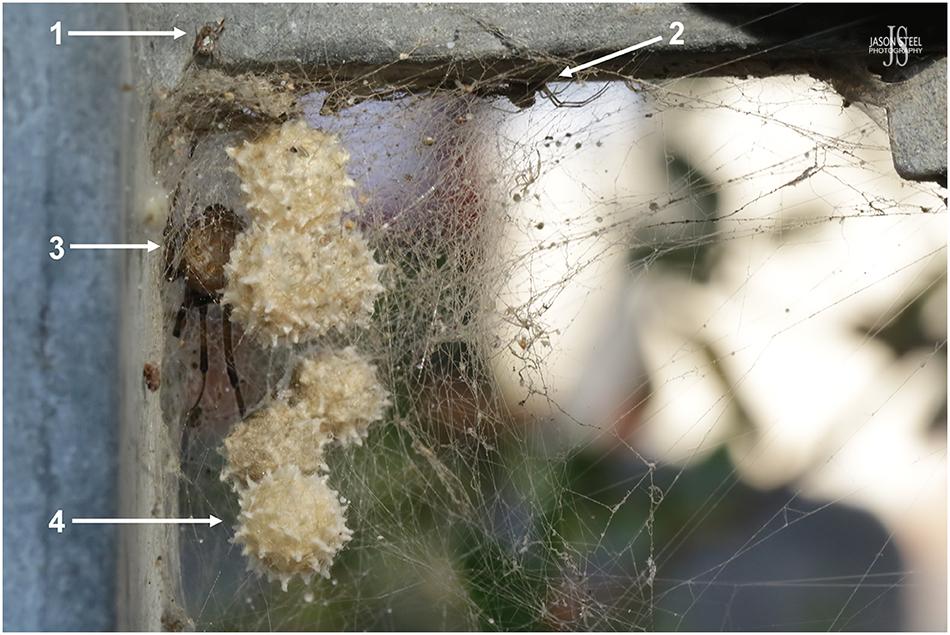
The tangled web of the Brown Widow, built on iron railings in Paphos, September 2023.
This image shows how prolifically the Brown Widow Breeds during the warmer months of the year. This web contains an adult female Brown Widow in her web with six egg-sacs. At the edge of the web the small male specimen can be seen standing guard. At the top of the web a tiny juvenile specimen can also be seen, which is likely to have originated from previous egg-sacs.
1) Juvenile Brown Widow from previous egg-sacs. 2) Adult male Brown Widow. 3) Adult female Brown Widow. 4) 6 Brown Widow egg-sacs
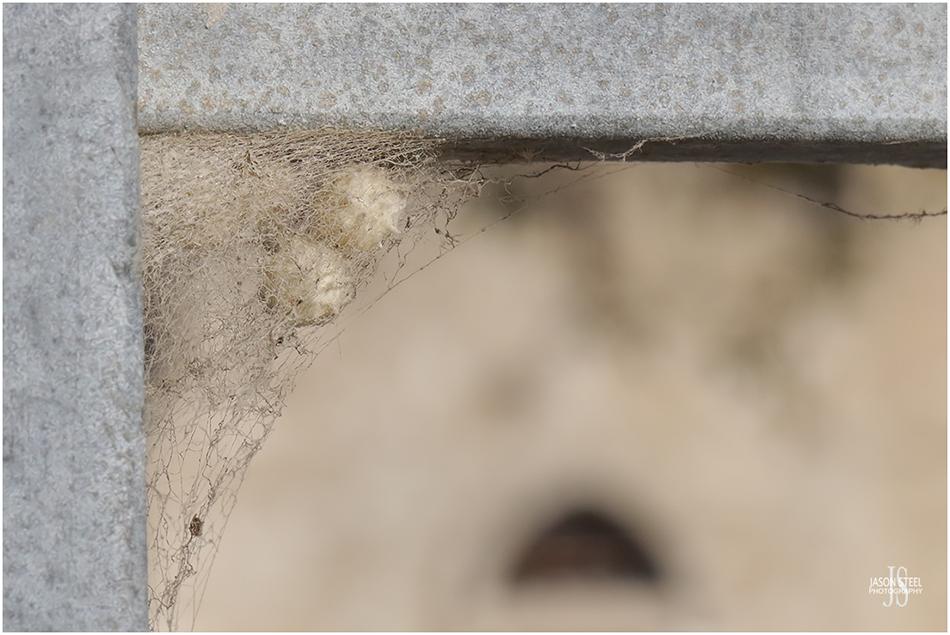
The tangled web of the Brown Widow, built on iron railings in Paphos, September 2023.
This Brown Widow web, containing 4 egg-sacs, was built on iron railings around a church, where it was exposed to the scorching heat of the Mediterranean summer sun for most of the day. This may help with the rapid development of the eggs, but it also demonstrates the ability of the Brown Widow to endure very high temperatures.
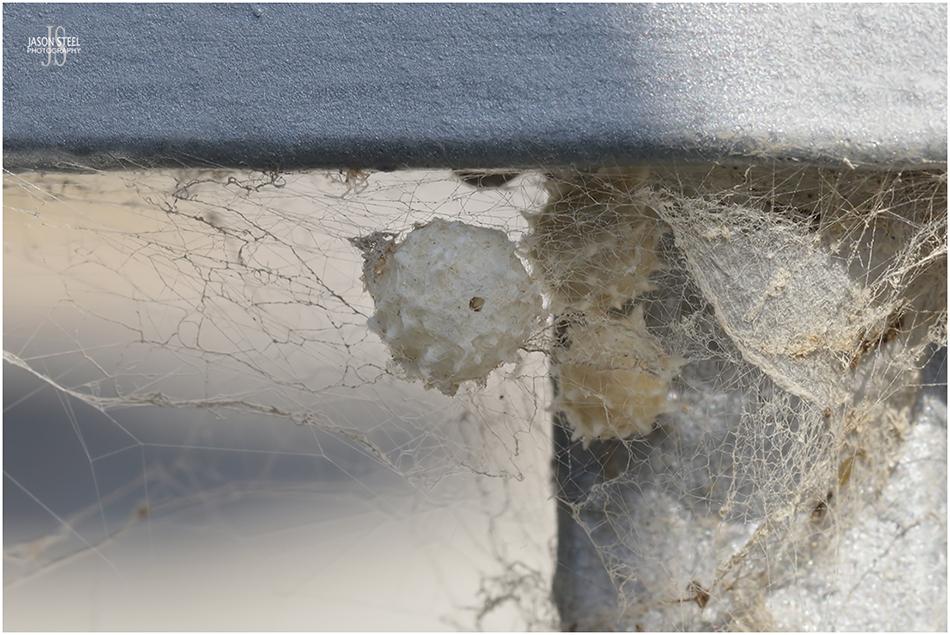
Brown Widow web with egg-sacs, built on iron railings in Paphos, September 2023.
Another web of the Brown Widow containing egg-sacs. This web was also built on iron railings, this time at an archaeological site in Paphos, Cyprus. You can see from the hole in the centre of the egg-sac that the eggs from this egg-sac have already hatched and the tiny spiderlings have dispersed.
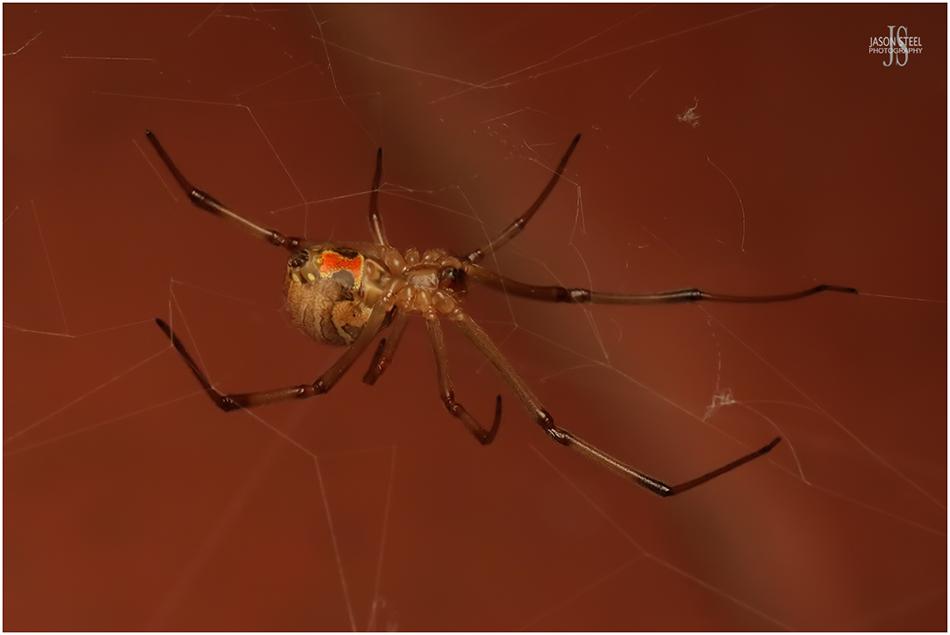
8mm adult female Brown Widow found in Paphos September 2023.
This adult female Brown Widow was one of 18 Latrodectus geometricus found in webs around the swimming pool area of the 5-star hotel where we were staying in Paphos. This specimen was one of several that built their webs on the outside of terracotta flower-pots.
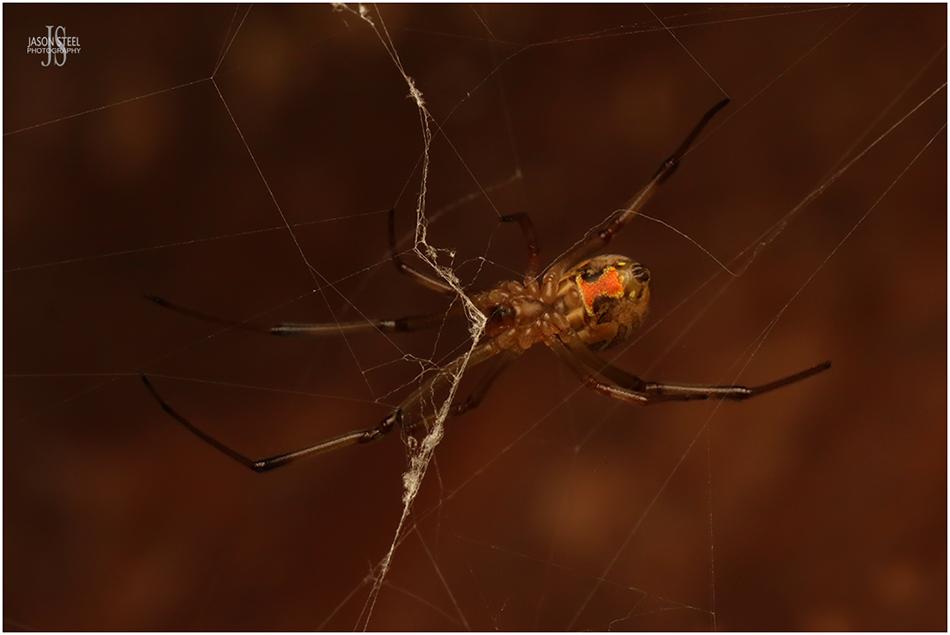
8mm adult female Brown Widow found in Paphos September 2023.
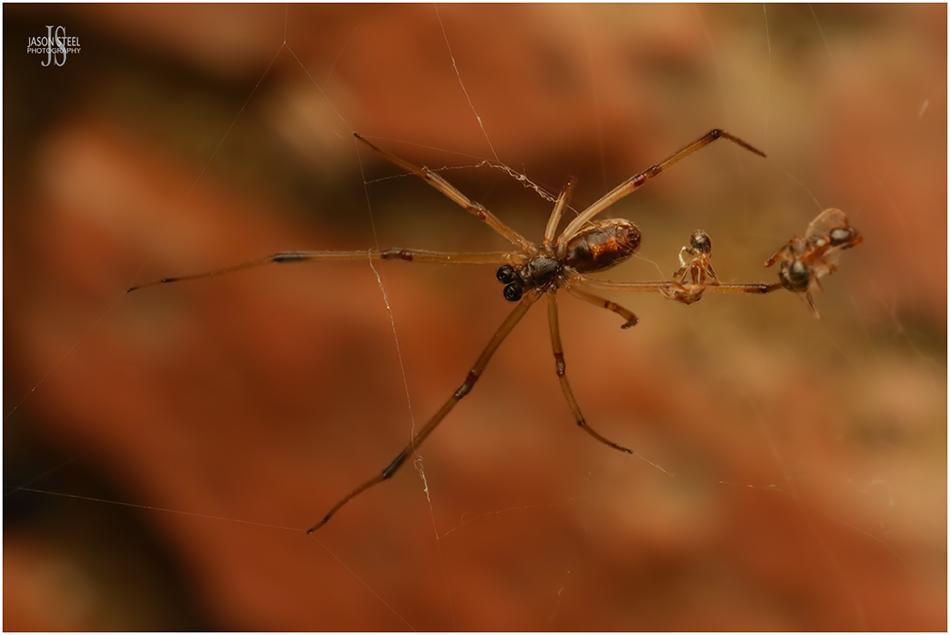
3mm adult male Brown Widow found in Paphos September 2023.
This adult male Brown Widow was another of the 18 specimens in webs around our hotel grounds in Paphos. The Brown Widow built its web just off the ground, on the side of a flower-pot, and was observed feeding on one of several small ants that had been caught in the web of the spider.
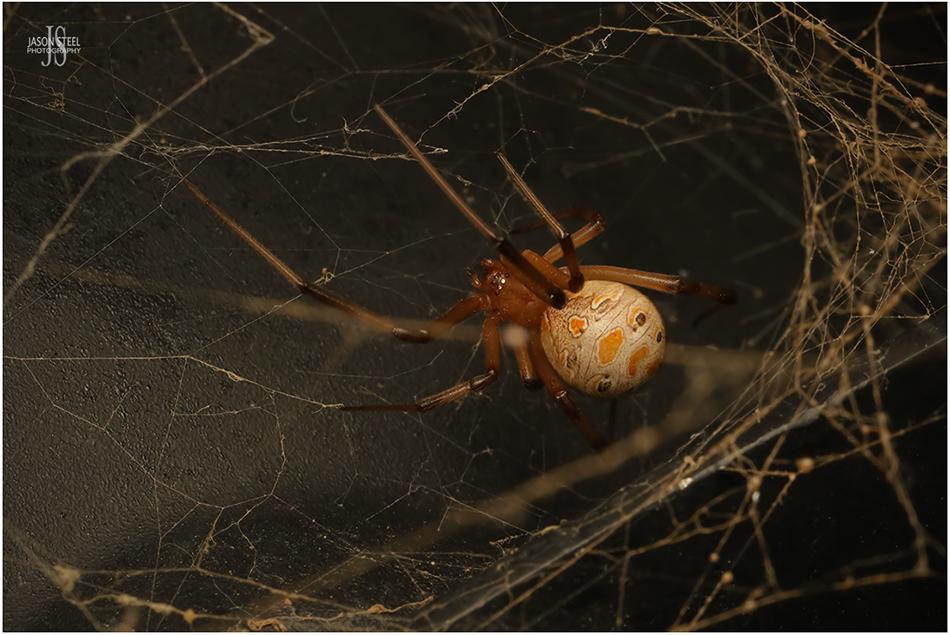
10mm adult female Brown Widow found in Paphos September 2023.
This 10mm adult female was the first Brown Widow we spotted in Cyprus. It built its web above a hanging flower basket at the rear of our hotel in Paphos. Just to the right of this image the web contained 4 egg-sacs.
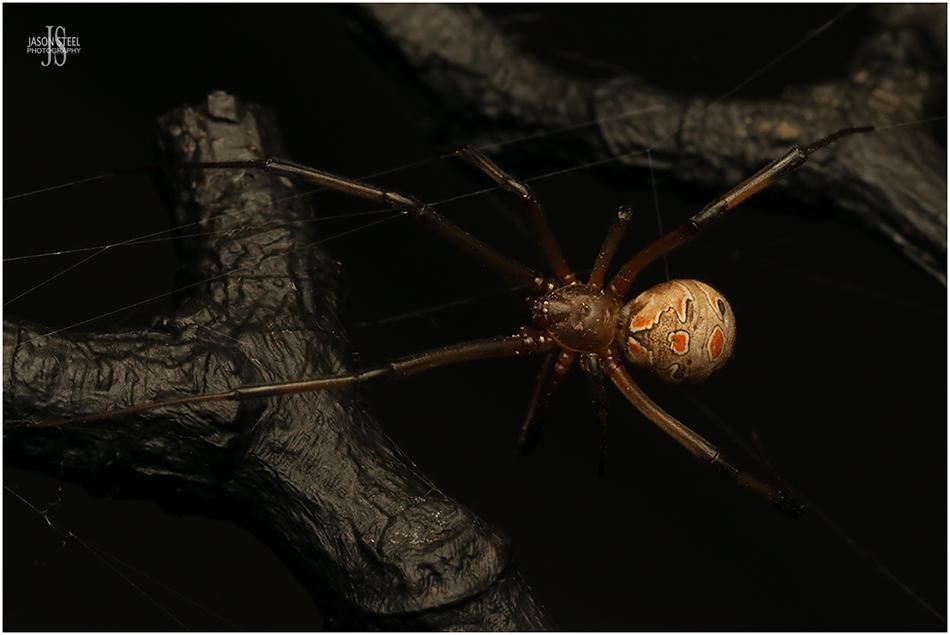
8mm adult female Brown Widow found in Paphos September 2023.
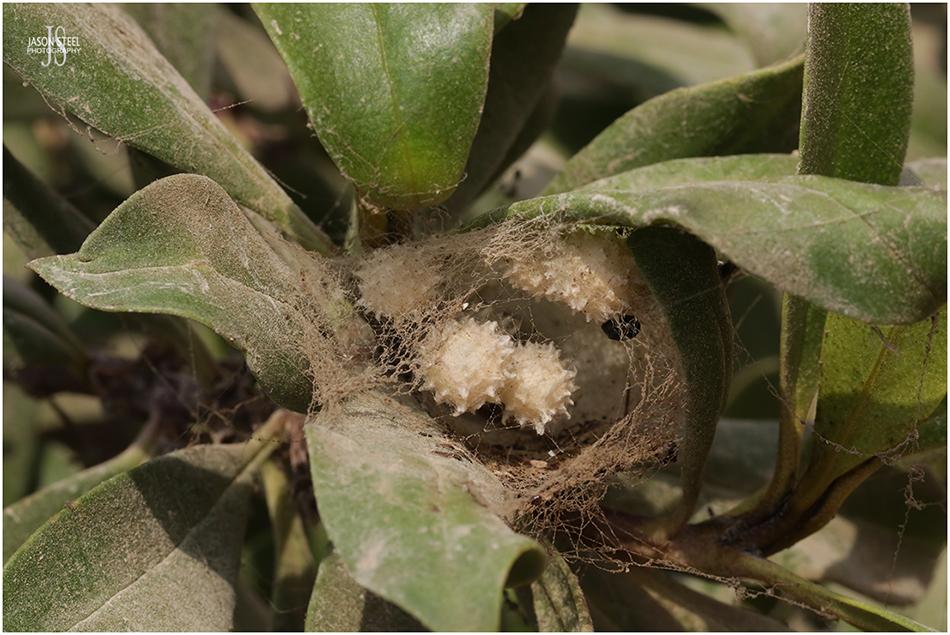
Brown Widow web, containing egg-sacs, built in a tree. September 2023.
An adult female Brown Widow was found hiding in her web, built 5ft from the ground amongst the leaves of a tree at St George's Harbour, in Peyia. The sand-filled web contained 7 egg-sacs.
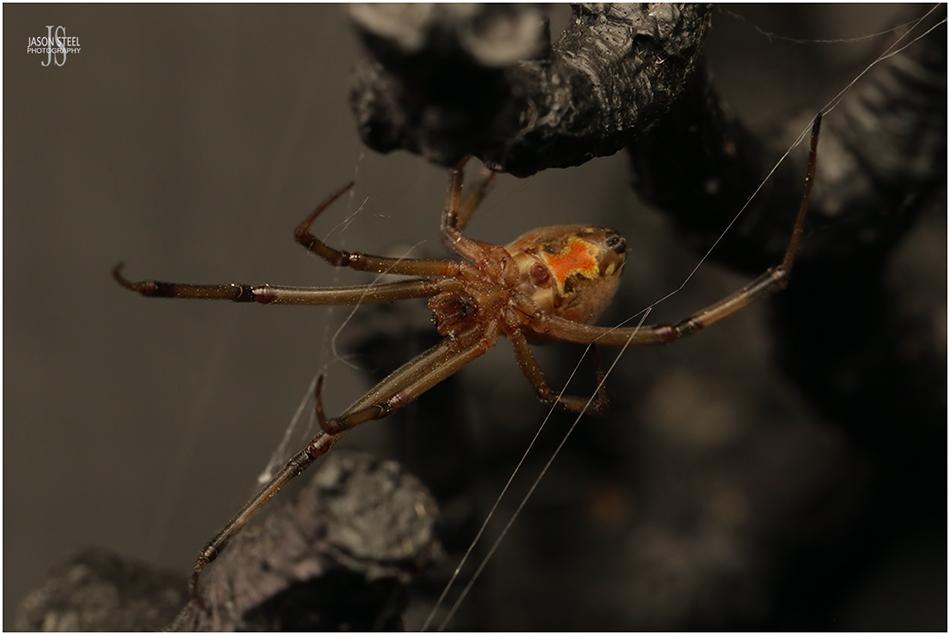
8mm adult female Brown Widow found in Paphos September 2023.
The bright orange 'hourglass' marking, found on the underside of the Brown Widow, instantly identifies it as a Latrodectus species.
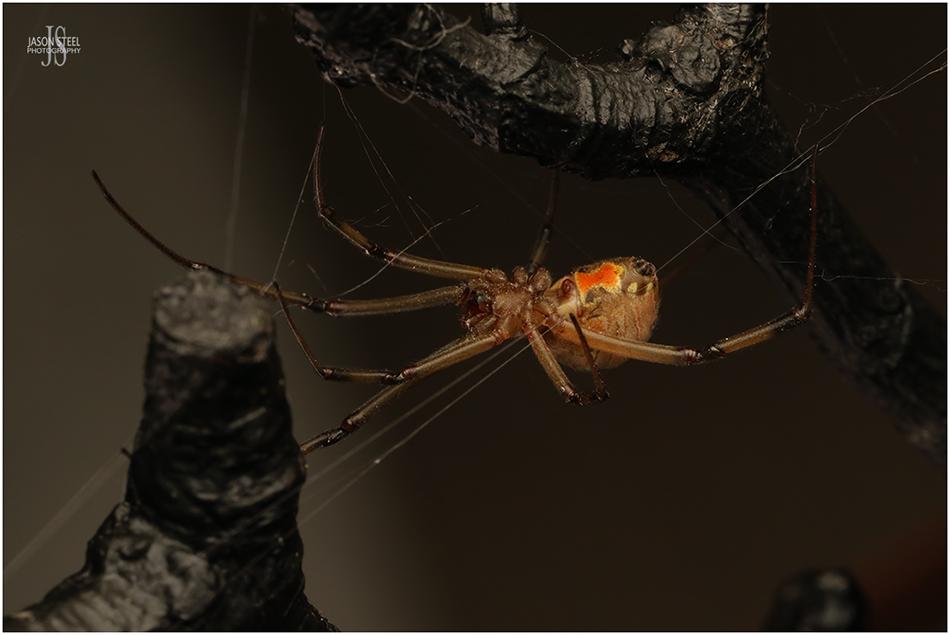
8mm adult female Brown Widow found in Paphos September 2023.
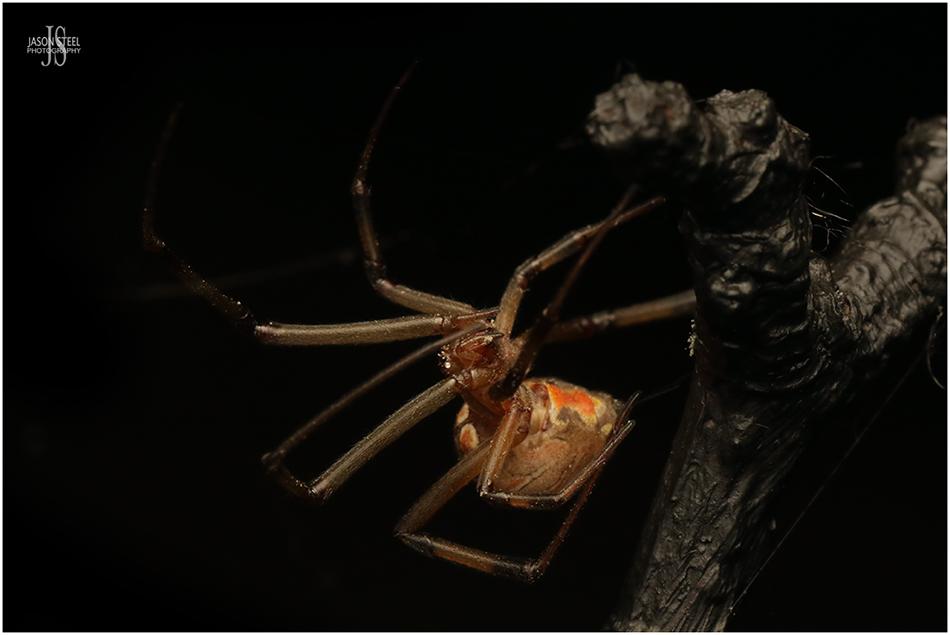
8mm adult female Brown Widow found in Paphos September 2023.
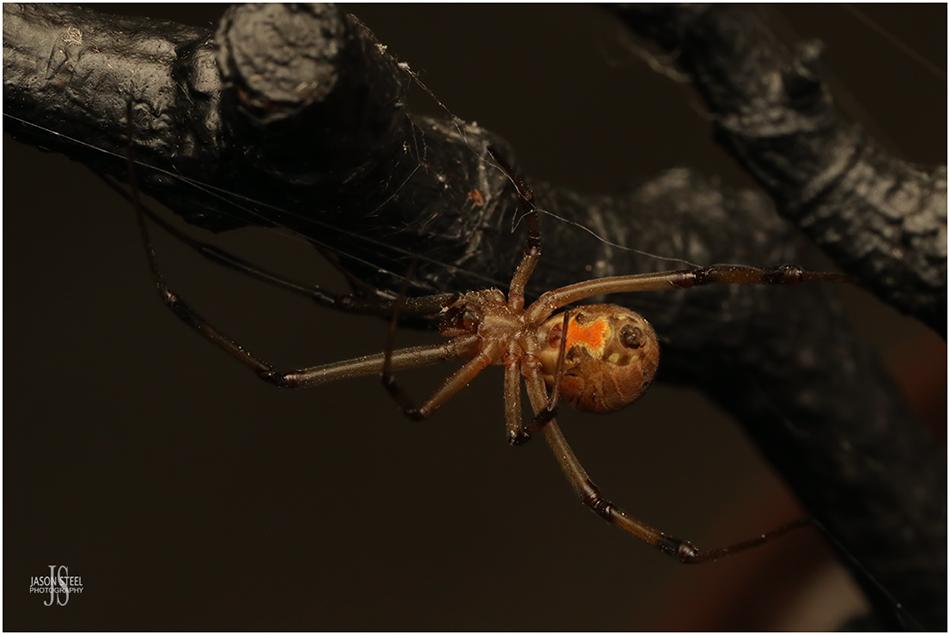
8mm adult female Brown Widow found in Paphos September 2023.
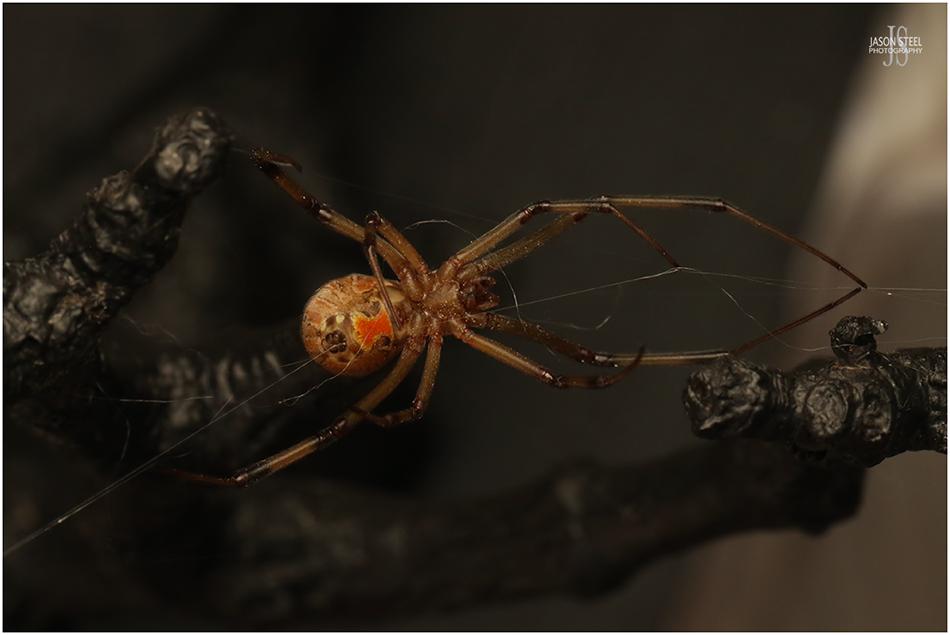
8mm adult female Brown Widow found in Paphos September 2023.
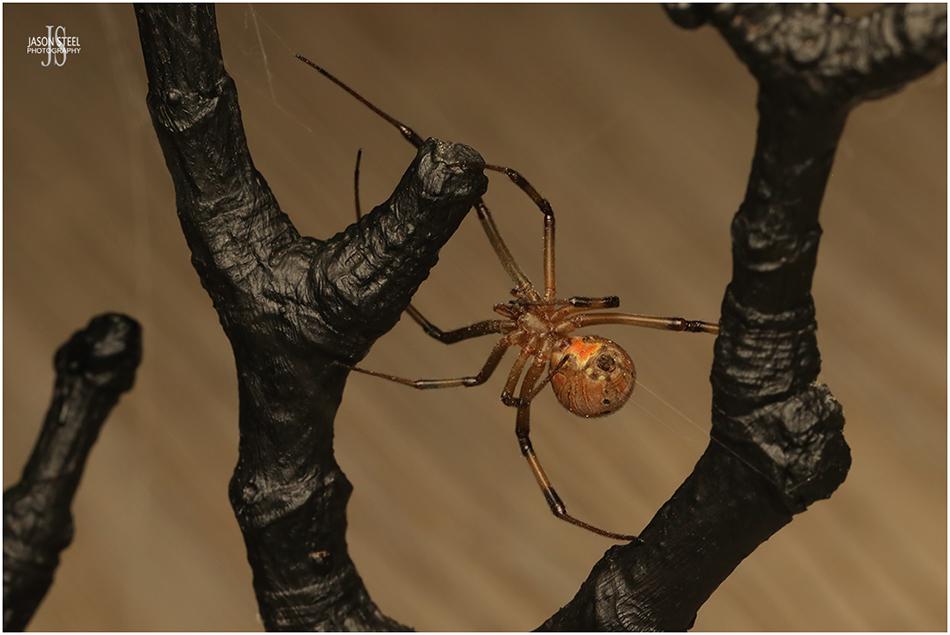
8mm adult female Brown Widow found in Paphos September 2023.
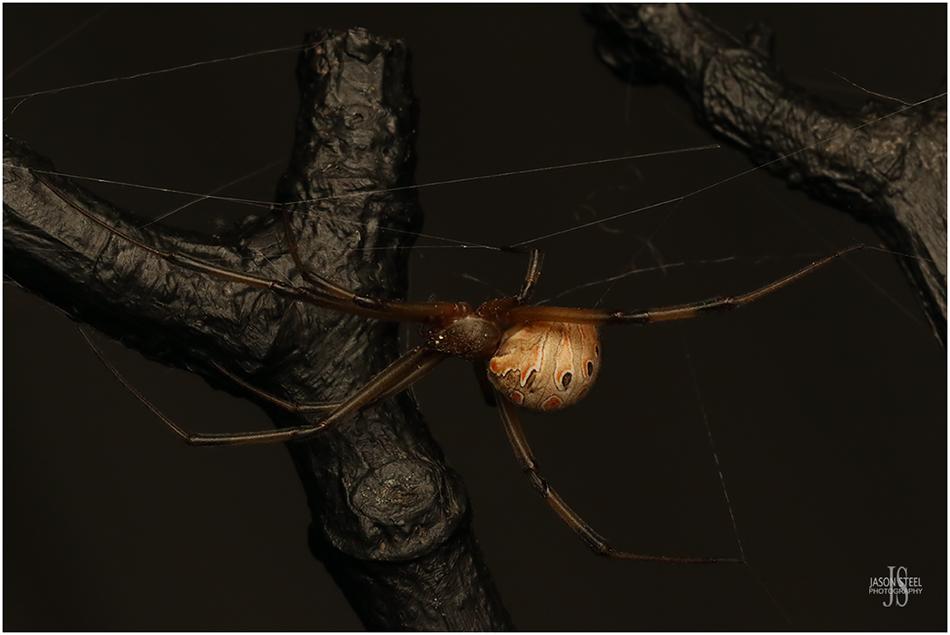
8mm adult female Brown Widow found in Paphos September 2023.
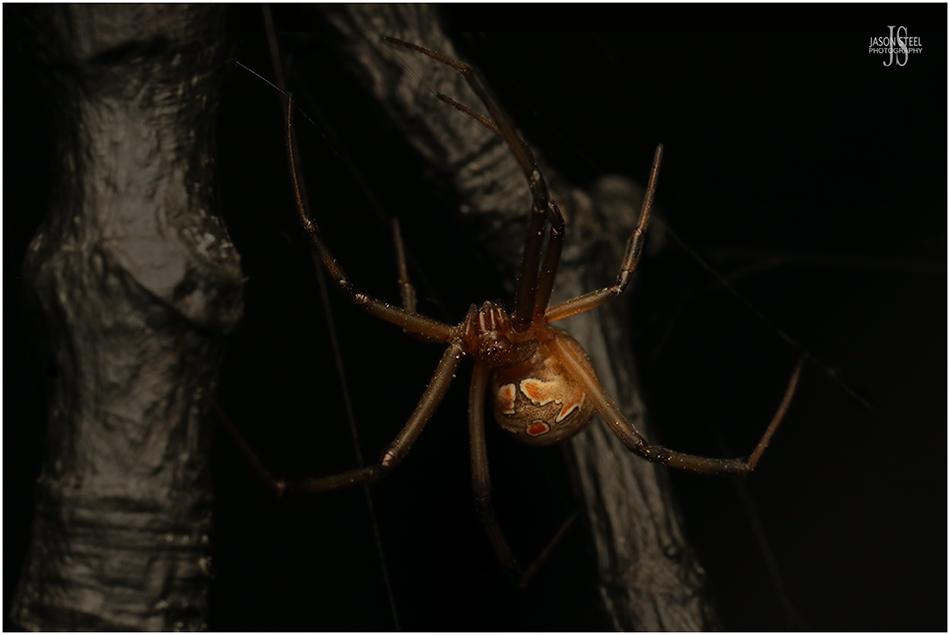
8mm adult female Brown Widow found in Paphos September 2023.
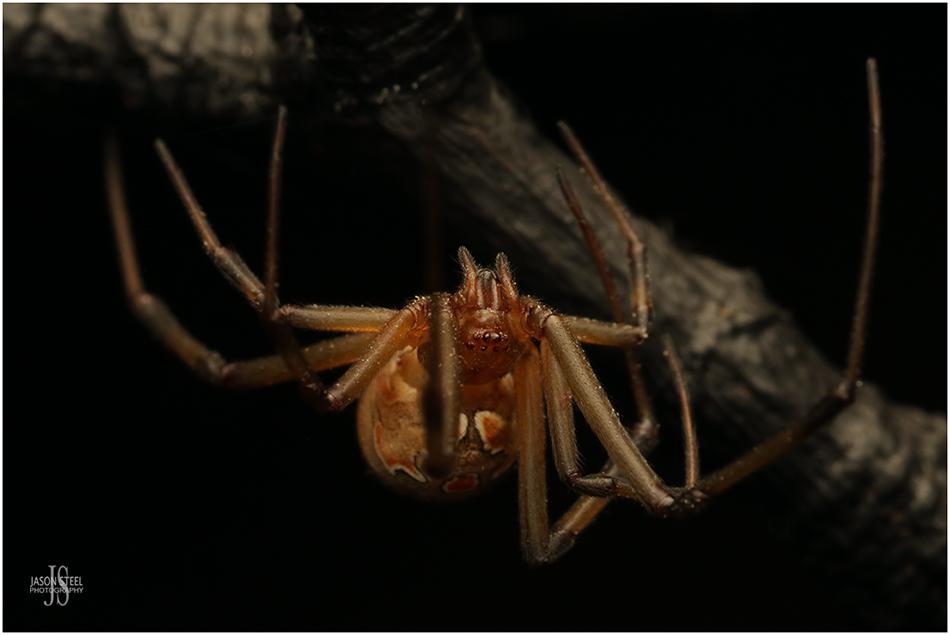
8mm adult female Brown Widow found in Paphos September 2023.
Looking closely at the outside pairs of eyes, the posterior lateral eyes and the anterior lateral eyes, this Latrodectus geometricus specimen can easily be distinguished from any Steatoda species. As with all Latrodectus species one can see there is an obvious gap between the PL eyes and the AL eyes. If this were a Steatoda species we would find that the PL eyes would be touching, or very nearly touching, the AL eyes.
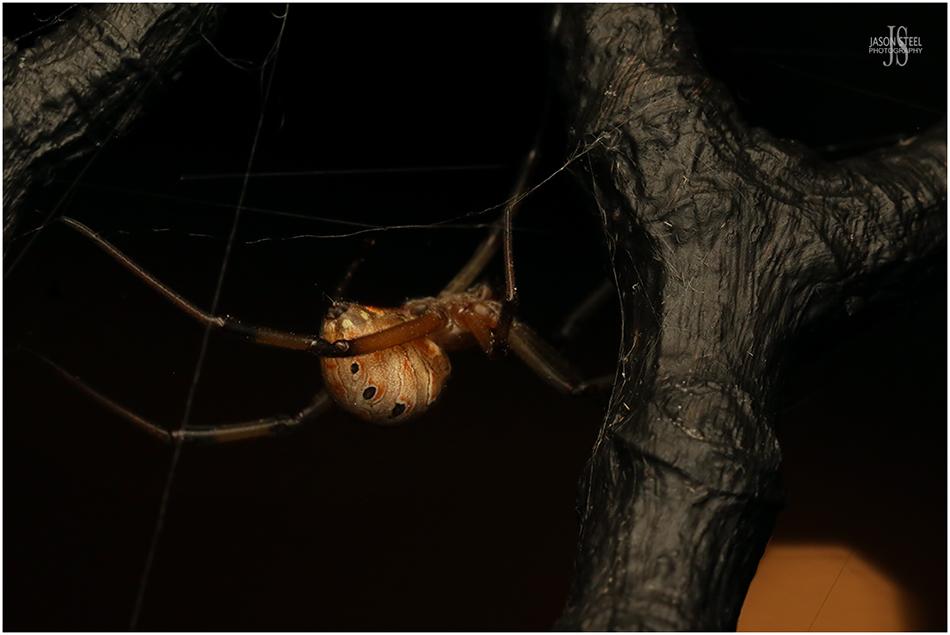
8mm adult female Brown Widow found in Paphos September 2023.

3mm adult male Brown Widow found in Paphos September 2023.
The male Brown Widow is a fraction of the size of the far larger female. The large palpal bulb on the pedipalps of the mature male leave little room for confusion with a juvenile specimen.
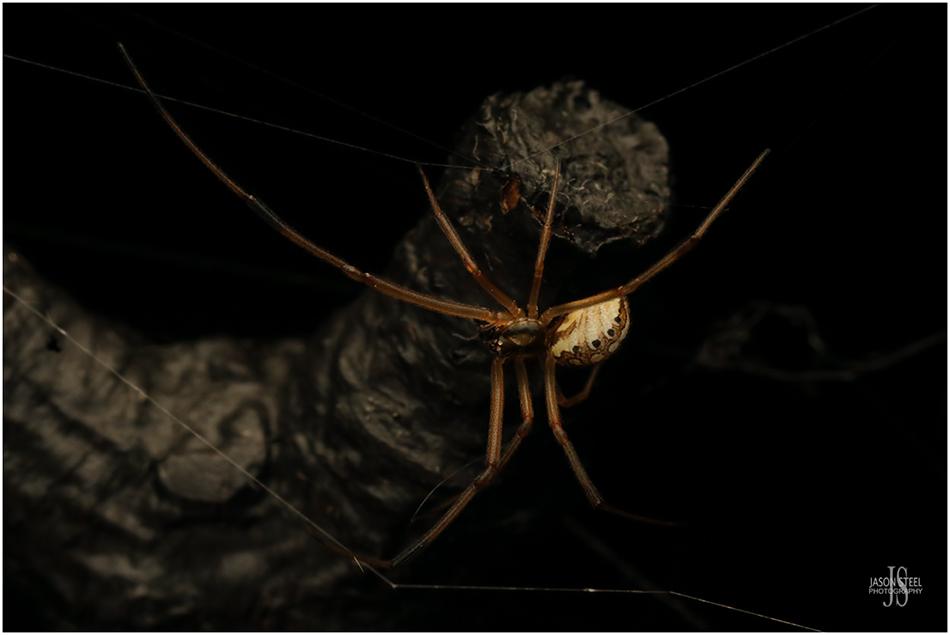
3mm adult male Brown Widow found in Paphos September 2023.
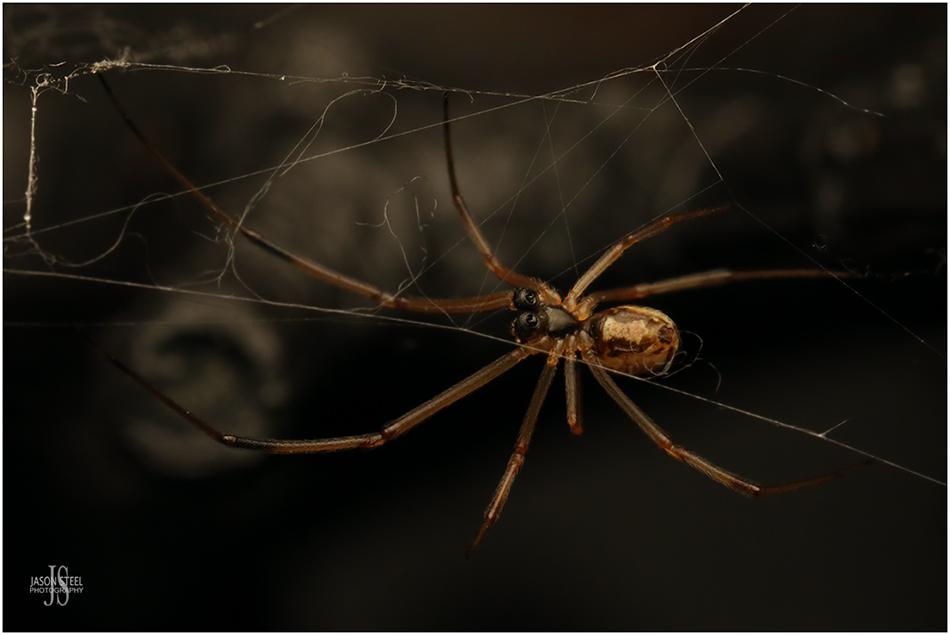
3mm adult male Brown Widow found in Paphos September 2023.
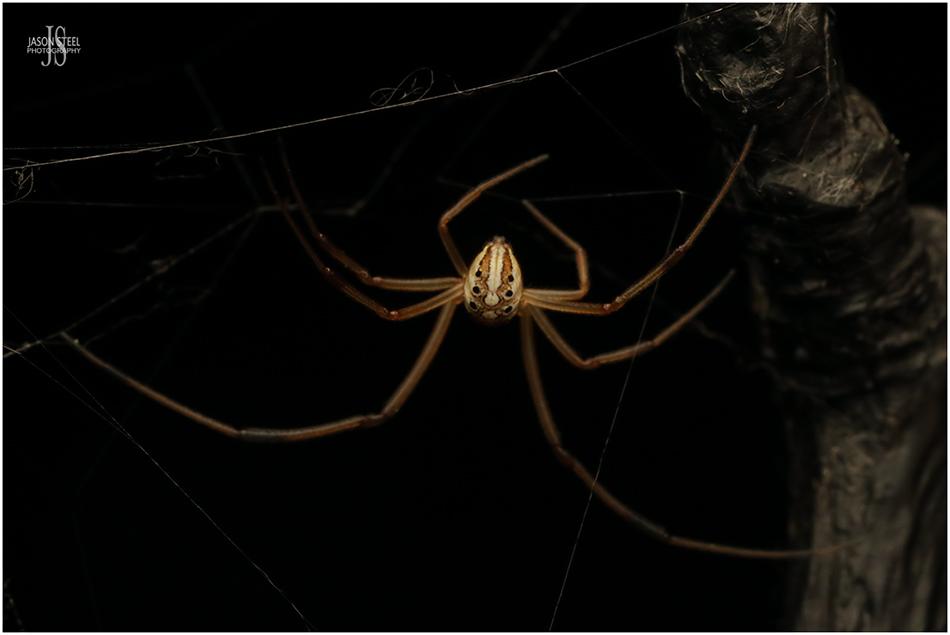
3mm adult male Brown Widow found in Paphos September 2023.
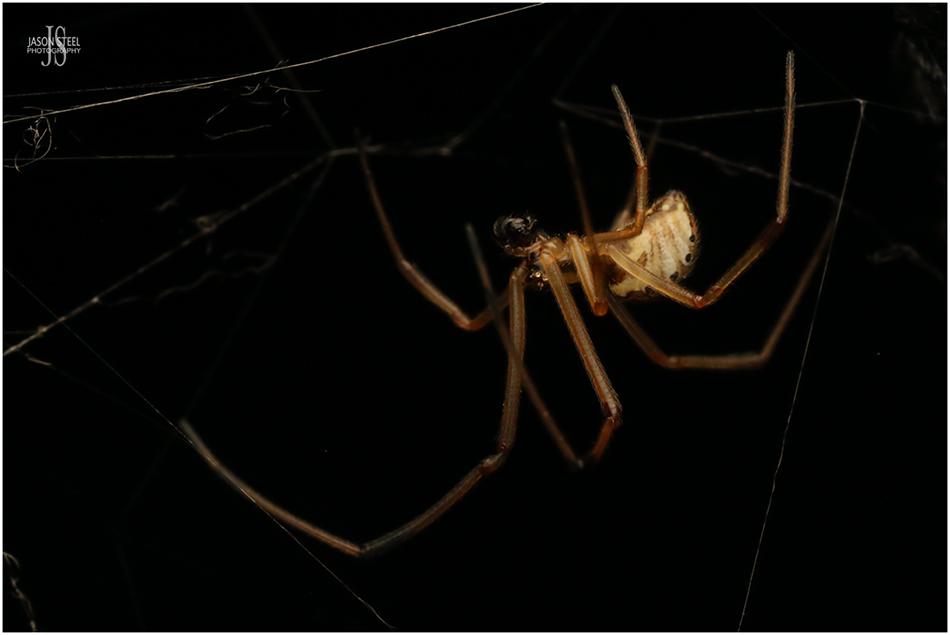
3mm adult male Brown Widow found in Paphos September 2023.
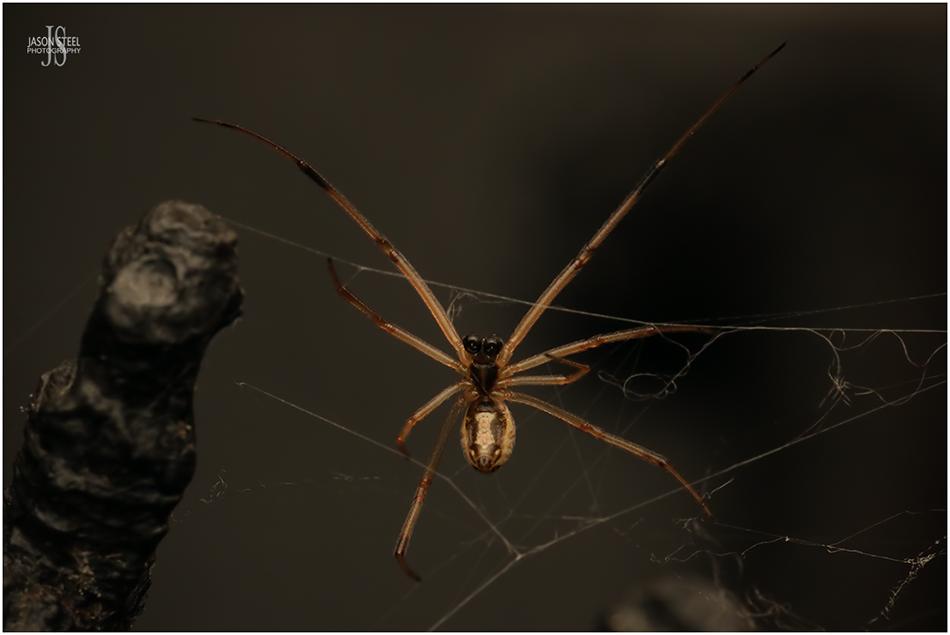
3mm adult male Brown Widow found in Paphos September 2023.
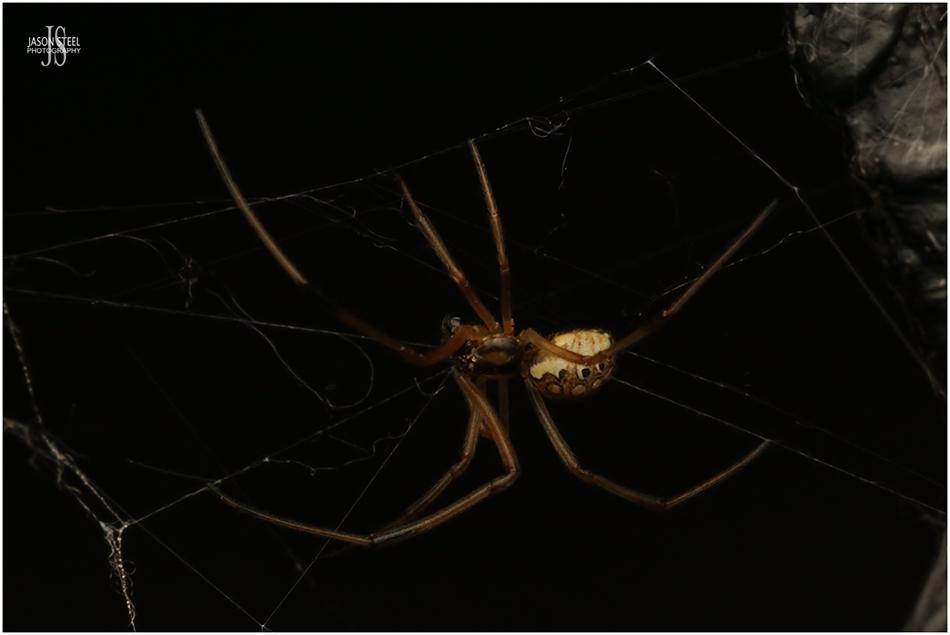
3mm adult male Brown Widow found in Paphos September 2023.
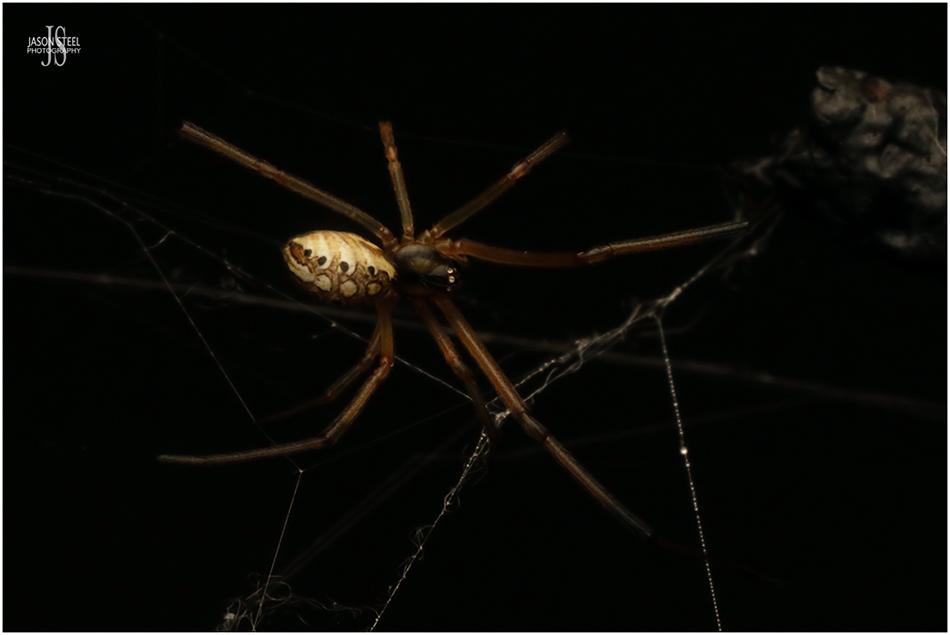
3mm adult male Brown Widow found in Paphos September 2023.
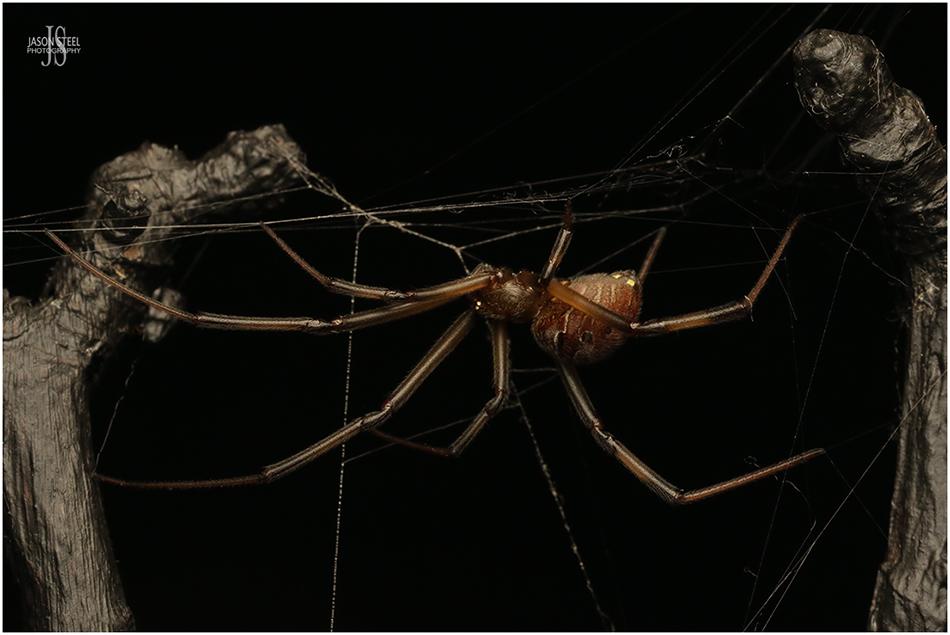
9mm adult female Brown Widow found in Paphos September 2023.
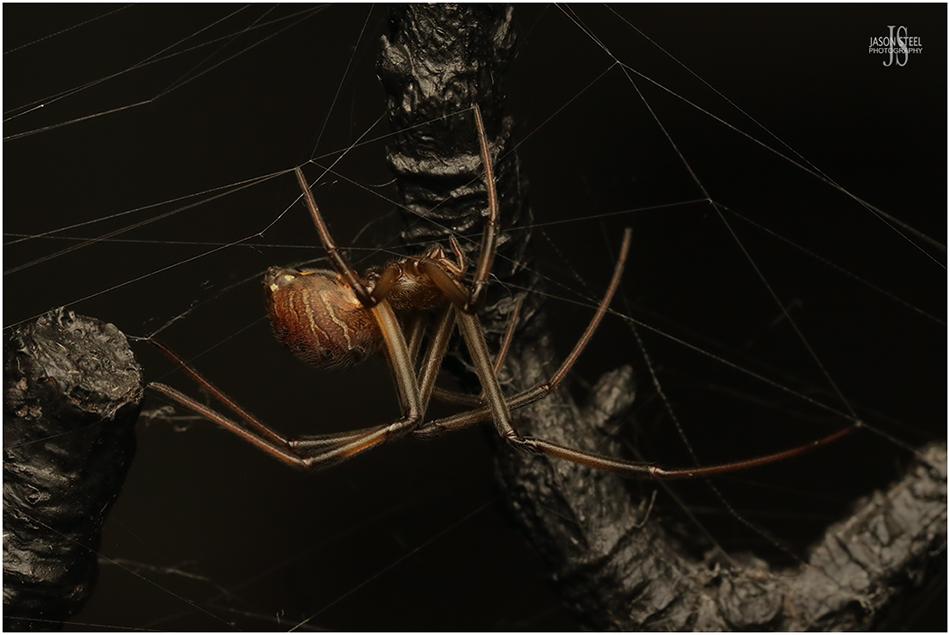
9mm adult female Brown Widow found in Paphos September 2023.
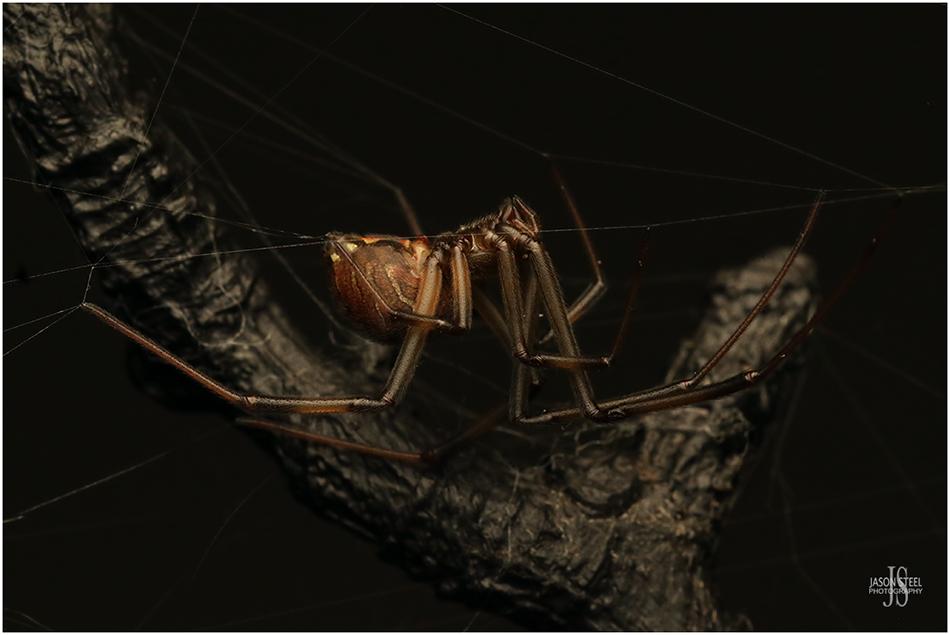
9mm adult female Brown Widow found in Paphos September 2023.
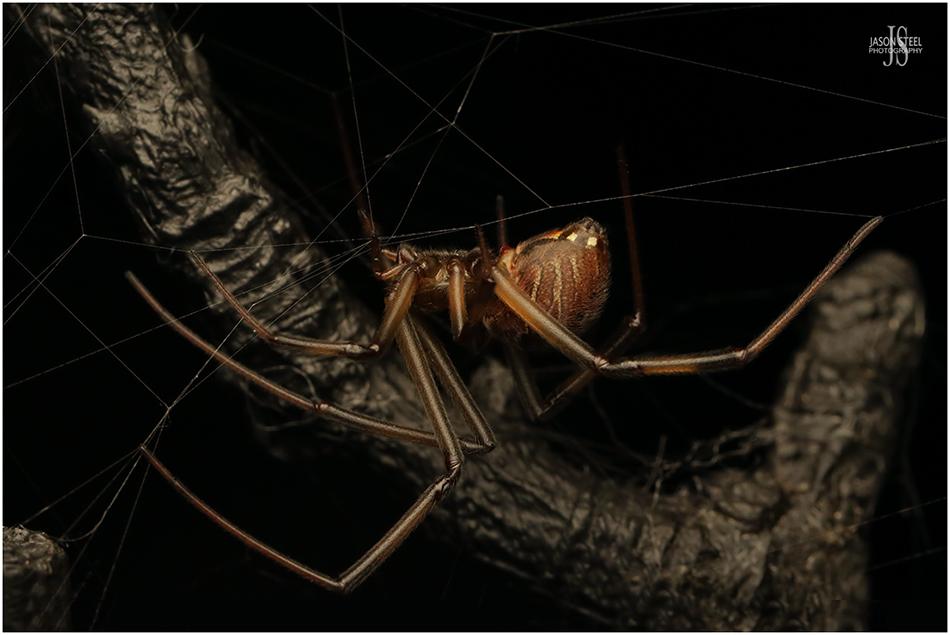
9mm adult female Brown Widow found in Paphos September 2023.
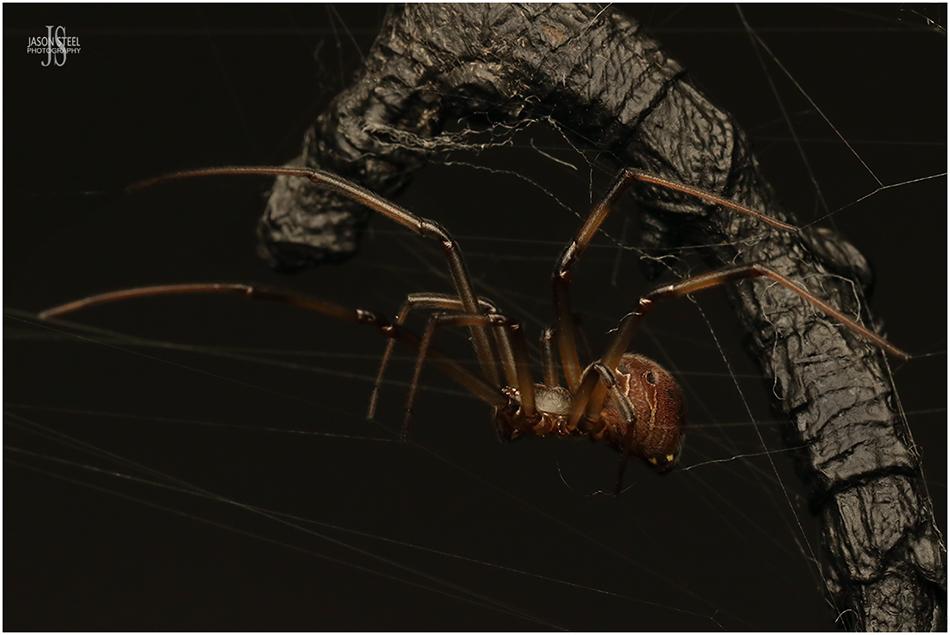
9mm adult female Brown Widow found in Paphos September 2023.
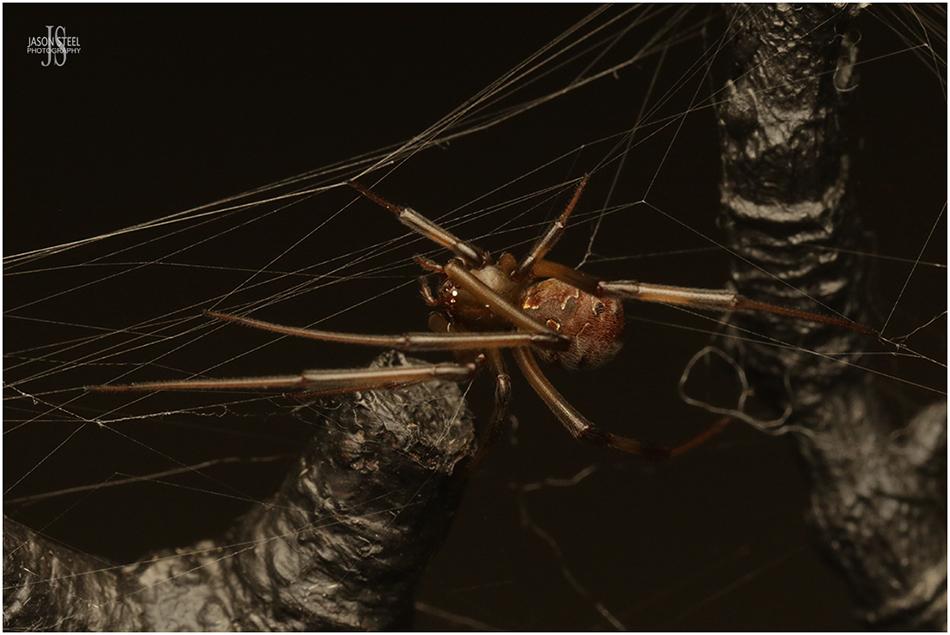
9mm adult female Brown Widow found in Paphos September 2023.
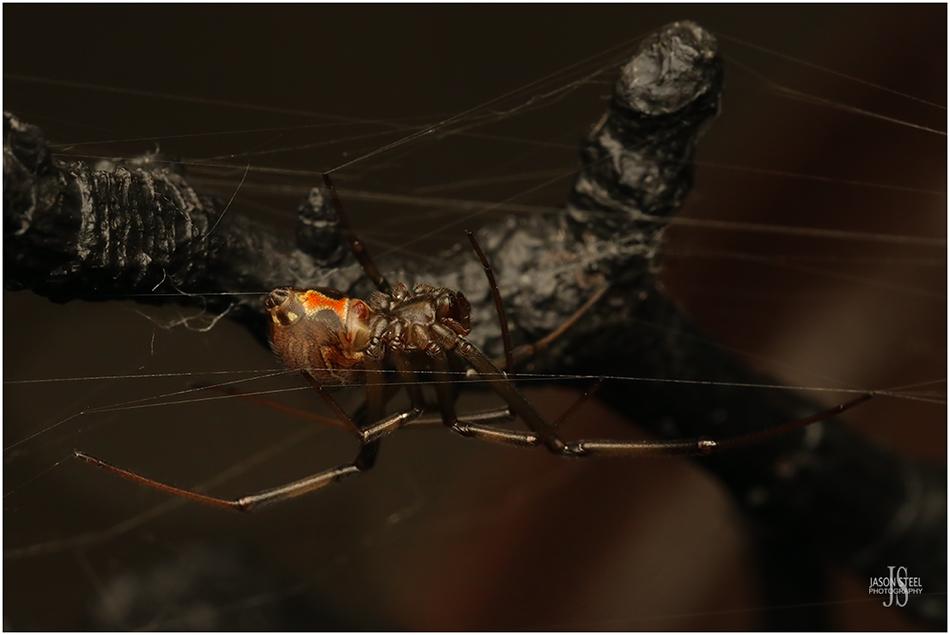
9mm adult female Brown Widow found in Paphos September 2023.
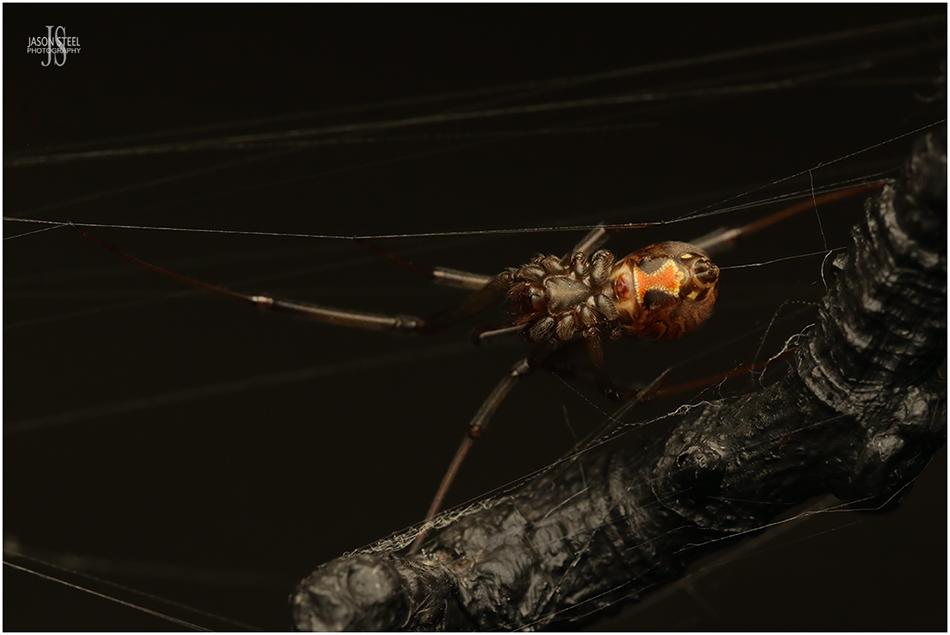
9mm adult female Brown Widow found in Paphos September 2023.
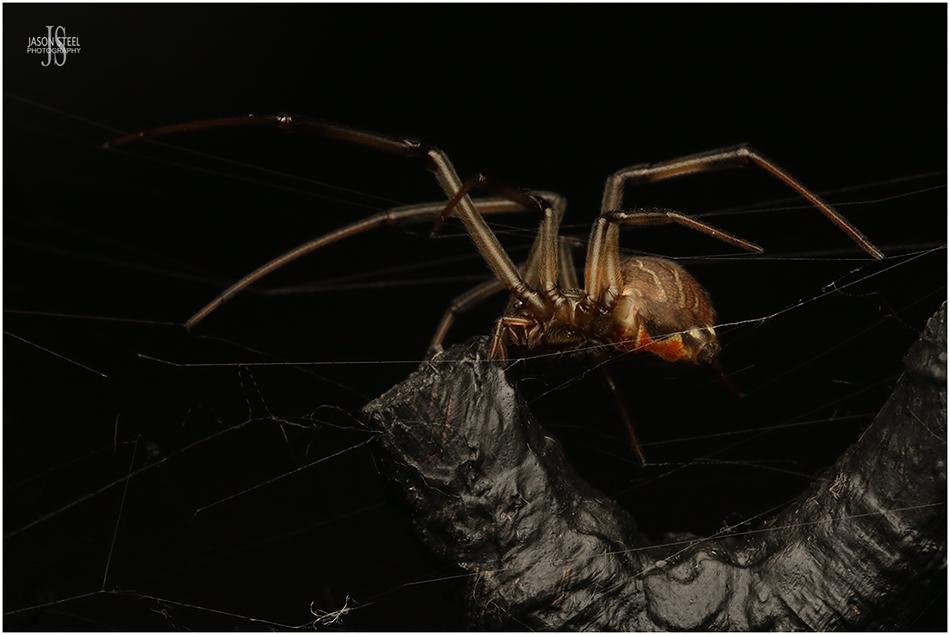
9mm adult female Brown Widow found in Paphos September 2023.
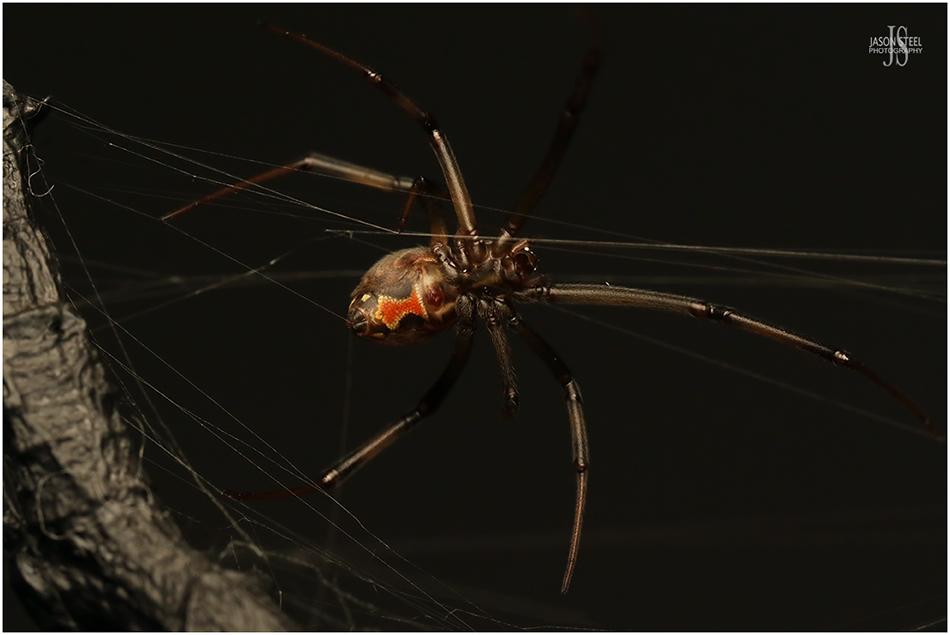
9mm adult female Brown Widow found in Paphos September 2023.
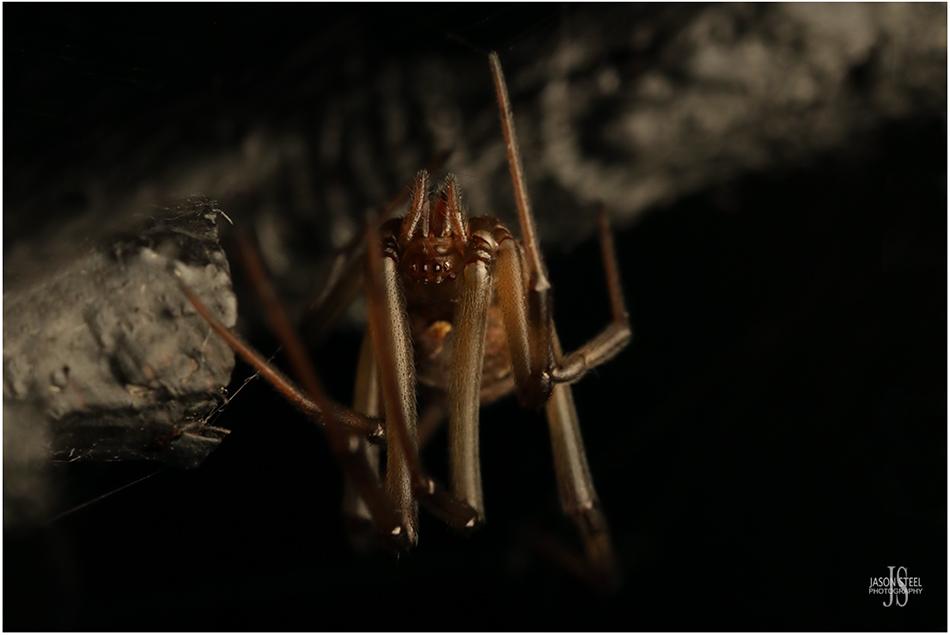
9mm adult female Brown Widow found in Paphos September 2023.
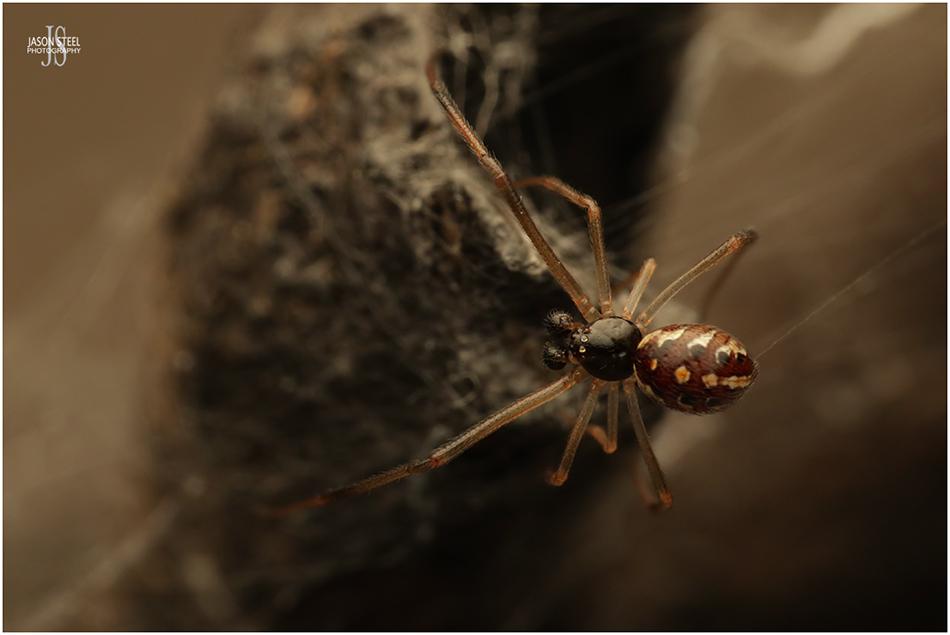
3.5mm adult male Brown Widow found in Paphos September 2023.
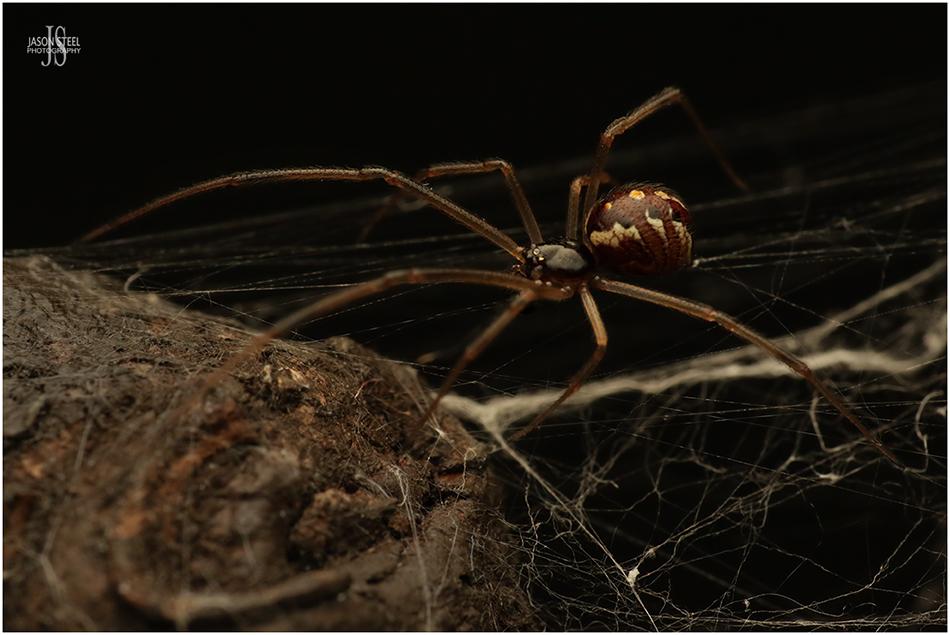
3.5mm adult male Brown Widow found in Paphos September 2023.
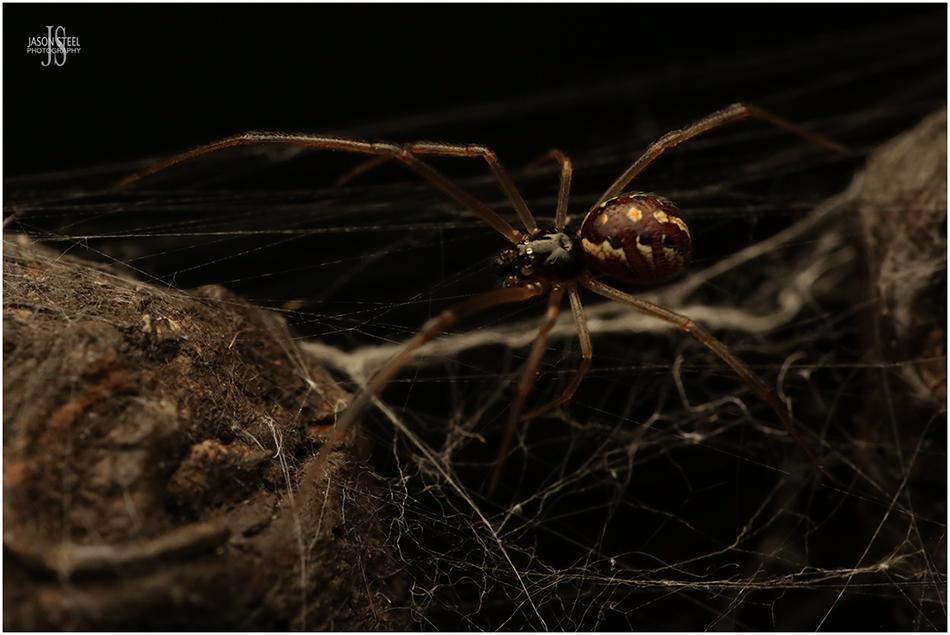
3.5mm adult male Brown Widow found in Paphos September 2023.
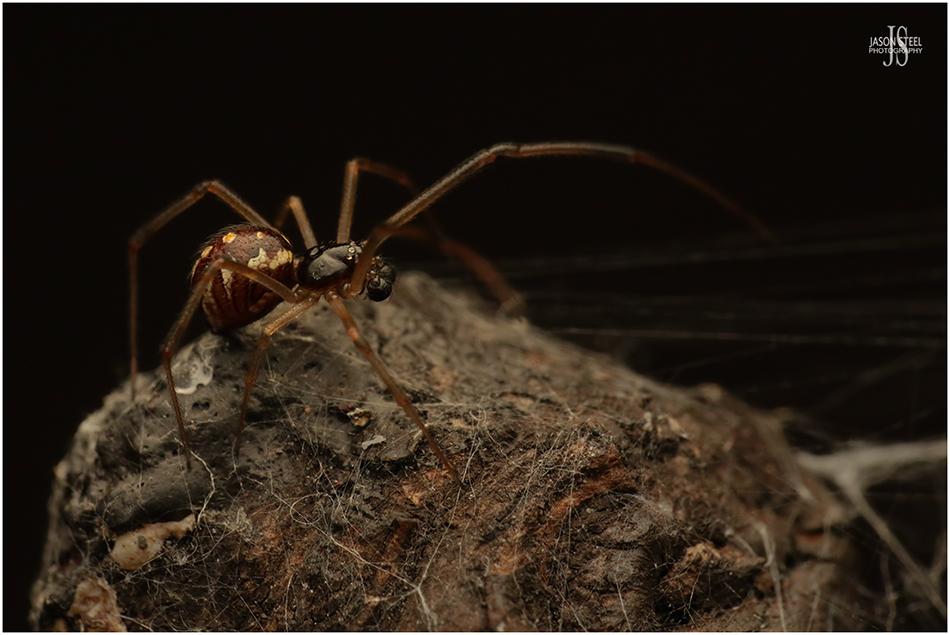
3.5mm adult male Brown Widow found in Paphos September 2023.
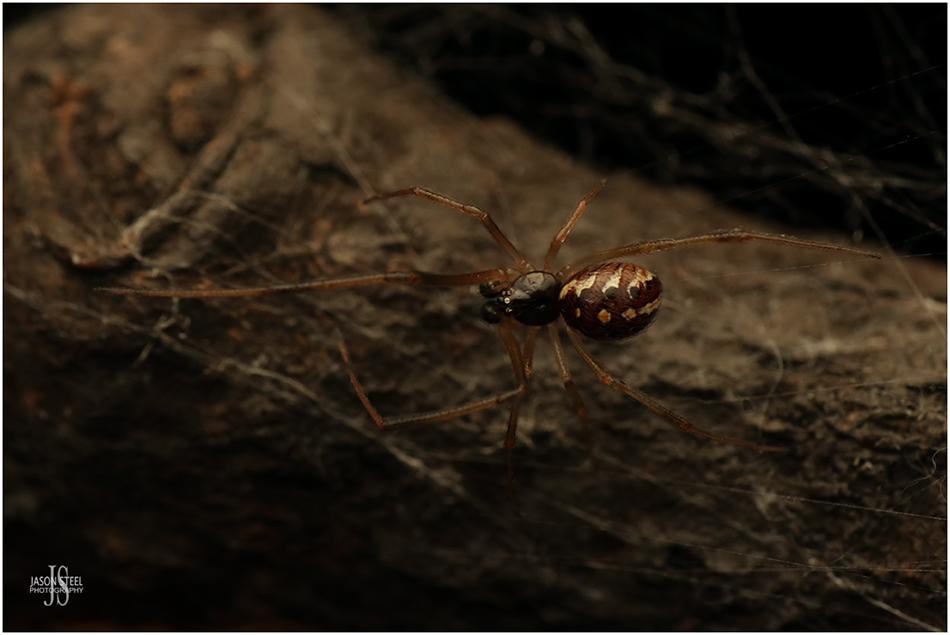
3.5mm adult male Brown Widow found in Paphos September 2023.
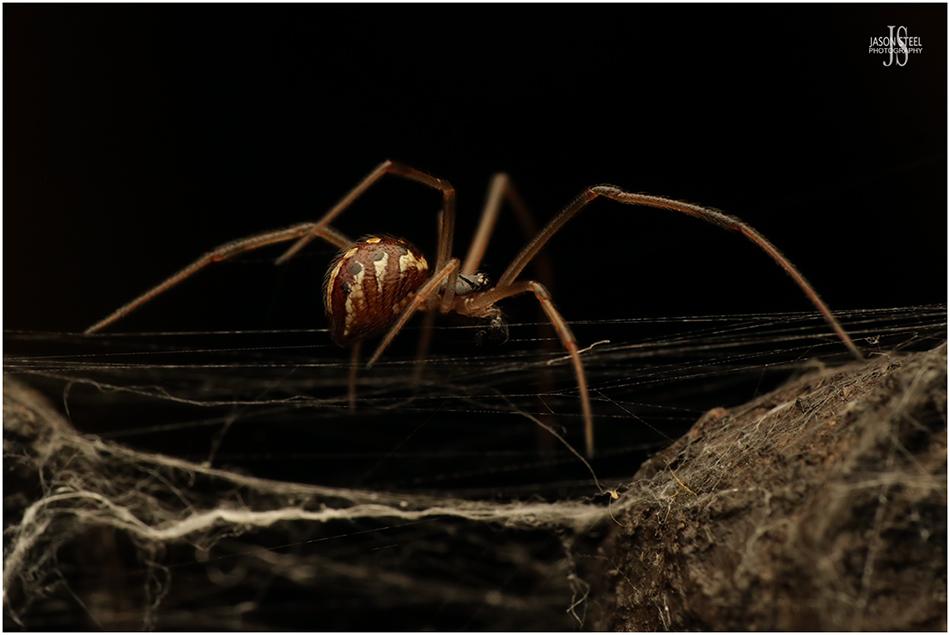
3.5mm adult male Brown Widow found in Paphos September 2023.
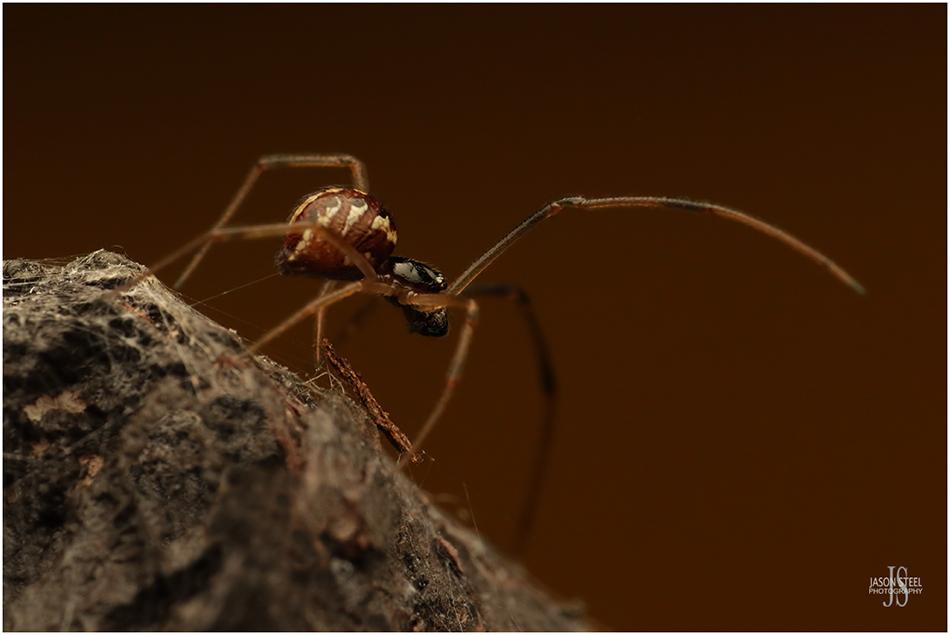
3.5mm adult male Brown Widow found in Paphos September 2023.
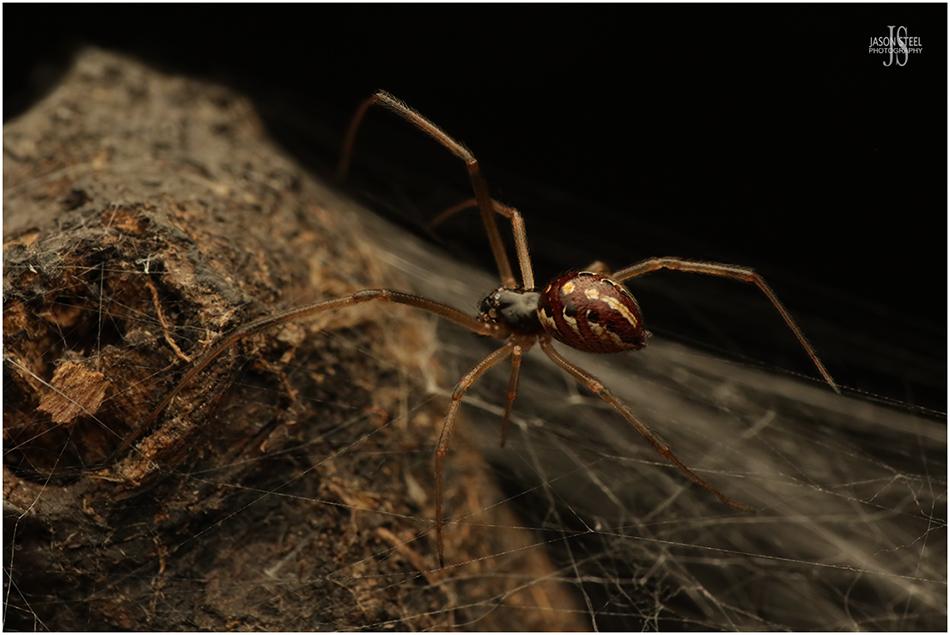
3.5mm adult male Brown Widow found in Paphos September 2023.
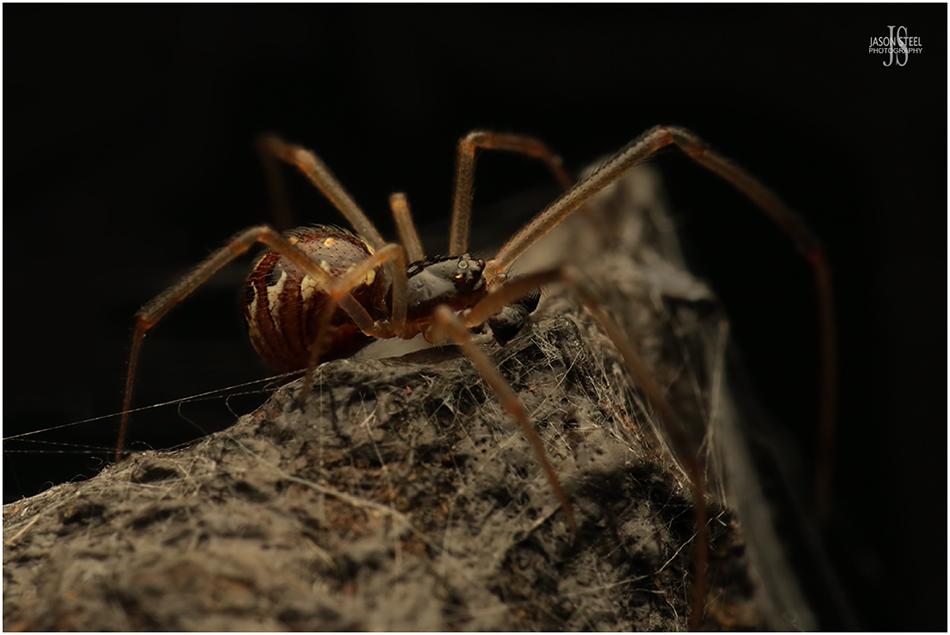
3.5mm adult male Brown Widow found in Paphos September 2023.
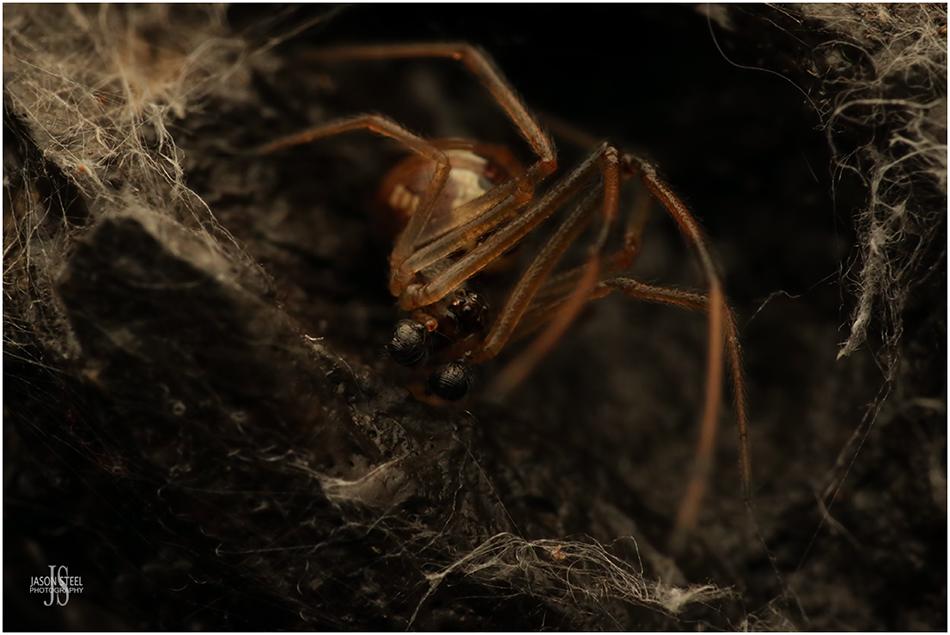
3.5mm adult male Brown Widow found in Paphos September 2023.
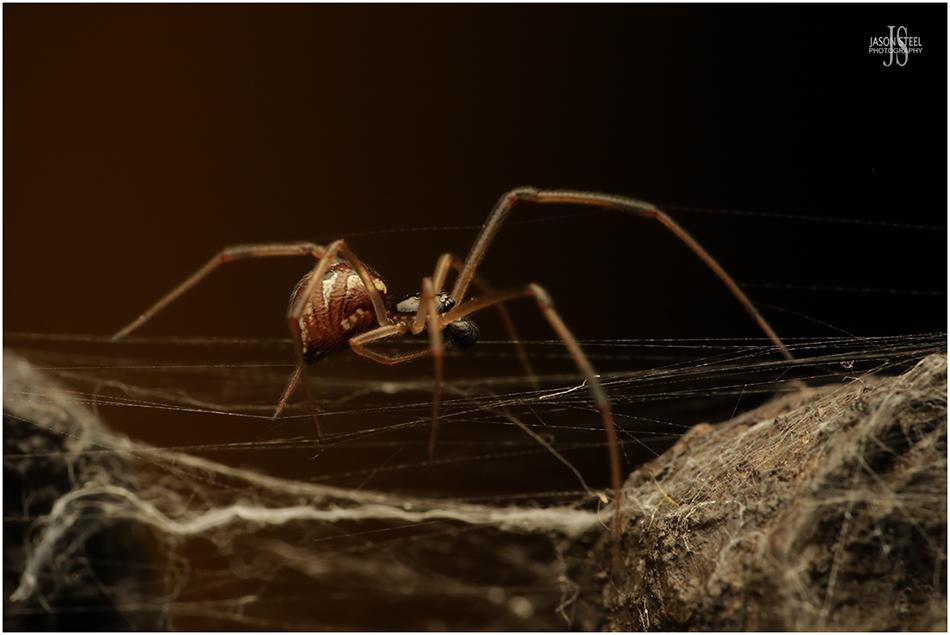
3.5mm adult male Brown Widow found in Paphos September 2023.
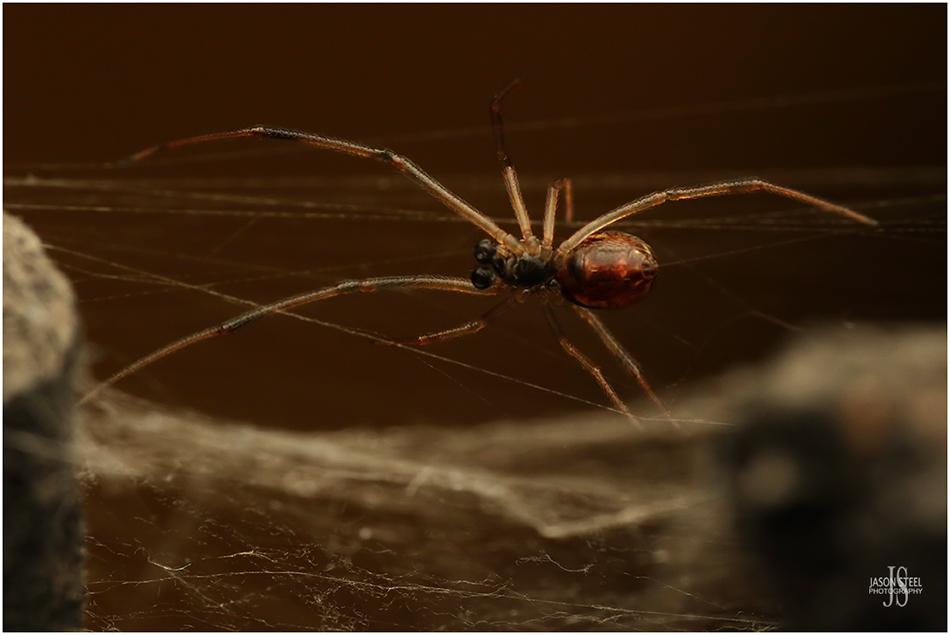
3.5mm adult male Brown Widow found in Paphos September 2023.
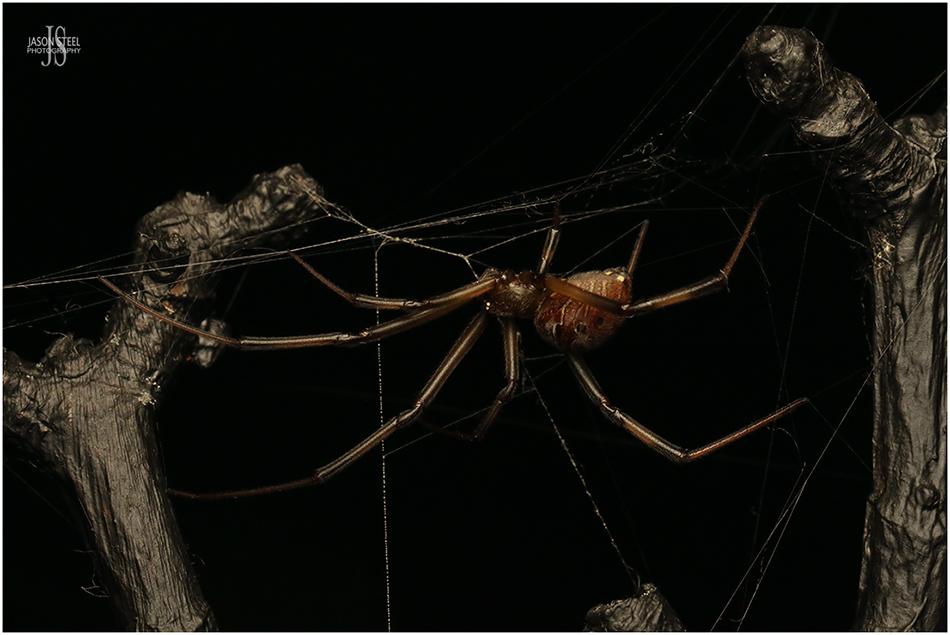
10mm adult female Brown Widow found in Paphos September 2023.
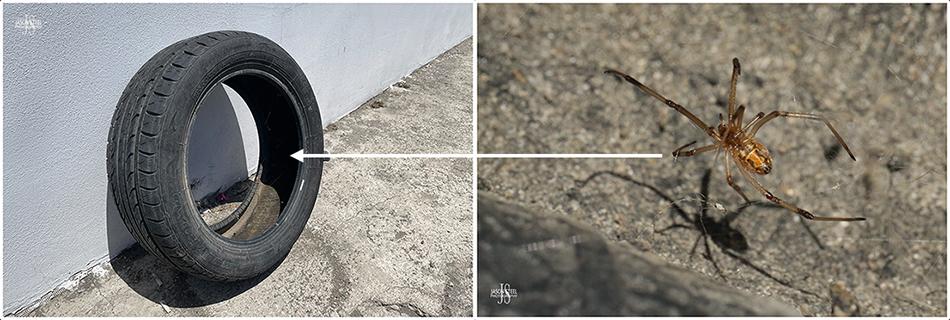
Juvenile Brown Widow in its web, built in an abandoned tyre, in a car park in Limassol town centre. May 2025.
My Search For Latrodectus Species in Cyprus 2025
In May 2025 I returned once again to the beautiful island of Cyprus to resume my search for Latrodectus species. This was my fourth visit to Cyprus so this time I broadened my search and hunted for Latrodectus species way beyond the Paphos area that I had previously searched during my former visits to the island. My travels took me as far east as Limassol, and up into the north-west peninsula, around the Taras Baths of Aphrodite. I also searched at various altitudes on my climb to the 1700m peak of the Troodos Mountains. During my searches I hunted for Latrodectus species in a wide range of habitats, including urban towns, countryside, agricultural fields, forest areas, dry and arid landscapes, mountainous rocky areas and beaches. Disappointingly I was still unable to find either of the Black Widow species in Cyprus, Latrodectus Dahli and Latrodectus tredecimguttatus. I was able to see for myself how well established the Brown Widow, Latrodectus geometricus, had become outside of the Paphos area.
My searches in 2025 focussed largely on finding Black Widows but I still made a note of many of my Brown Widow findings during my quests. It was on the very first day of my holiday when we spotted the first Brown Widow. It was an adult female specimen that had built its web under a floodlight, positioned 4-5ft above the ground, and facing the Paphos FC building, on the busy Tomb of the Kings Road, in the tourist area of Paphos Town. The web contained several egg-sacs.
On the days that followed I checked many of the places around Paphos where I was able to find Brown Widow spiders or egg-sacs in 2023. In most of these areas I was still able to quickly find evidence of Brown Widow spiders there. These included window and door frames, public rubbish bins, large recycle bins, street signs and lamp posts. Unlike in 2023 on this visit in 2025 I didn't find any Brown Widows in bushes or trees this time. In 2023 there were many very popular tourist attractions in Paphos Town where I had observed an abundance of Brown Widow webs, that had been built on metal railings around the outside of the premises. At a couple of these sites in 2025 there were now no signs of Brown Widow webs, or spiders, on the railings and fences around their premises. There were still many places where these spiders thrived on the metal railings and fences so I can only assume that the staff at some popular tourist attractions were deliberately targeting and removing the Brown Widows from their fencing.
Our day trip to the busy town of Limassol proved very quickly that the Brown Widow was also well established in that area too. On entering the town centre we parked our car in a small, outdoor carpark, surrounded by both commercial buildings and homes. As soon as we exited the car I spotted several dumped car tyres at the edge of the car park. The first tyre I inspected showed signs of spiders webbing and a quick look inside the tyre confirmed that the web belonged to a small juvenile Brown Widow.
Elsewhere on the island, including the area around Aphrodite's Baths, and the Troodos Mountains, I didn't encounter any Brown Widow spiders at all. Although occasional records do come from these parts of Cyprus it seems these spiders are best suited to synanthropic habitats and are most well established on the southern coastal areas of the island, particularly around the busy urban towns.
During our 2025 holiday to Cyprus we opted to stay at a different hotel to the hotel we had stayed at on our previous visits to Cyprus. In 2023 I was able to find many Brown Widow spiders within the grounds of the hotel, and what was most surprising was just how numerous these spiders were on the underside of the hotel's sun-loungers and pool-side furniture. The hotel we stayed at during 2025 proved to be exactly the same. It was only whilst I was sun-bathing, and laying on a hotel sun-lounger, by the outdoor swimming pool, that I noticed the messy webs of Theridiidae spiders on the sun-lounger next to me, that was being used by my wife. At that moment I decided to get up and inspect the small plastic drinks table, placed between our sun-loungers. I turned over the table and immediately saw two Brown Widow spiders, with multiple egg-sacs. I tried to photograph and film the spiders as discreetly as possible, to avoid drawing attention and causing alarm to all the other hotel guests, who were sun-bathing around me. As the guests relaxed and enjoyed basking in the sun little did they know that many of the sun-loungers they were laying on had Brown Widow spiders sharing their sun-lounger with them. The fact that we hear of very few occurrences of Brown Widow bites to humans in Cyprus shows that despite being classed as a Dangerous Wild Animal species in the UK they actually pose very little danger to humans at all if left alone.
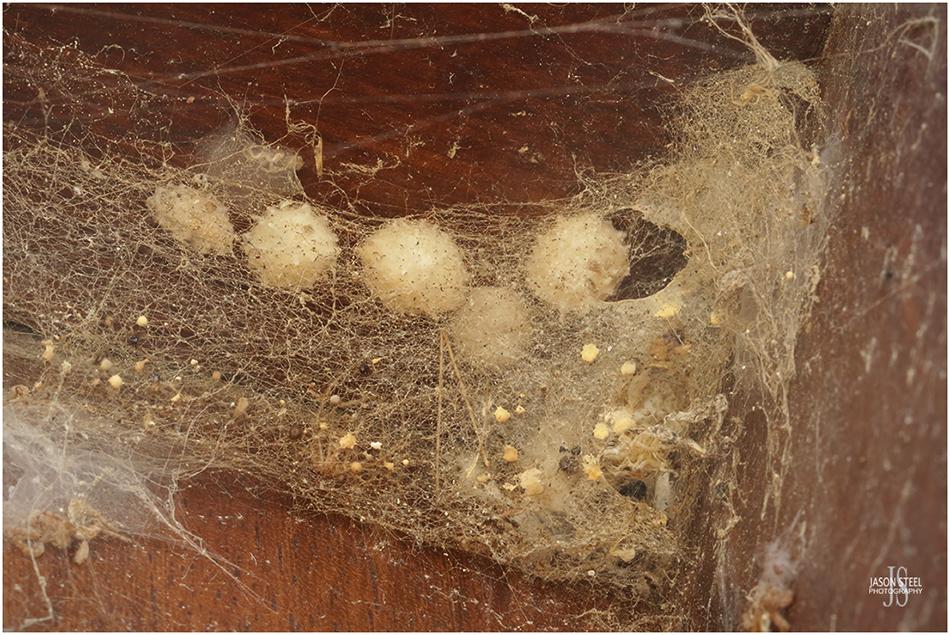
Brown Widow web containing both an adult female spider and several egg-sacs. Found on a wooden doorway in Akrotiri. 7th May 2025.
Upon visiting the Holy Monastery Of St Nicholas of the Cats I was quickly able to spots dozens of Brown Widow webs, many containing spiders and egg-sacs, around the walls, gates, and doorframes. The Brown Widow is definitely very well established in the Akrotiri area.
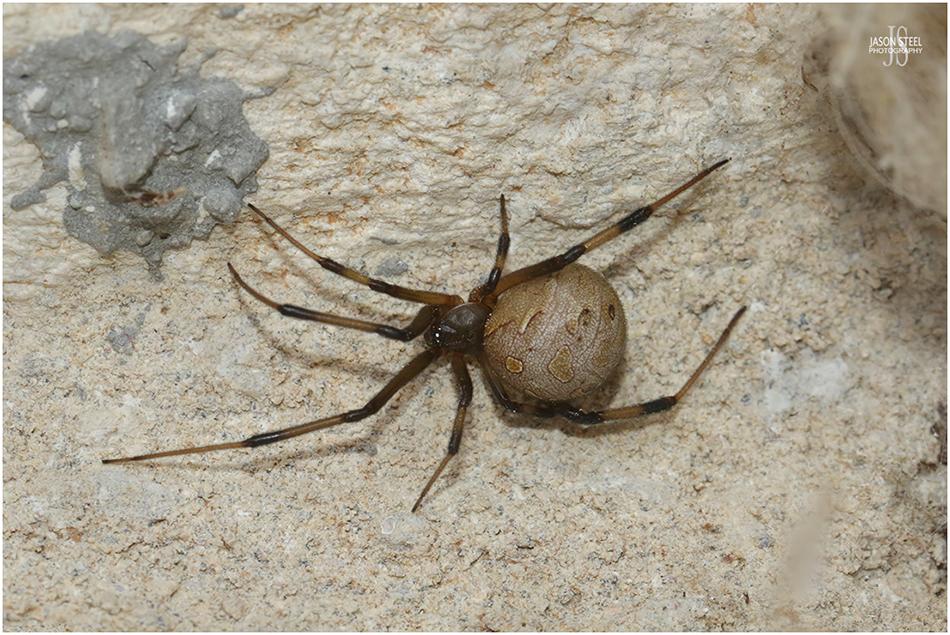
A heavily gravid female Brown Widow. Found on a shaded stone wall in Akrotiri. 7th May 2025.
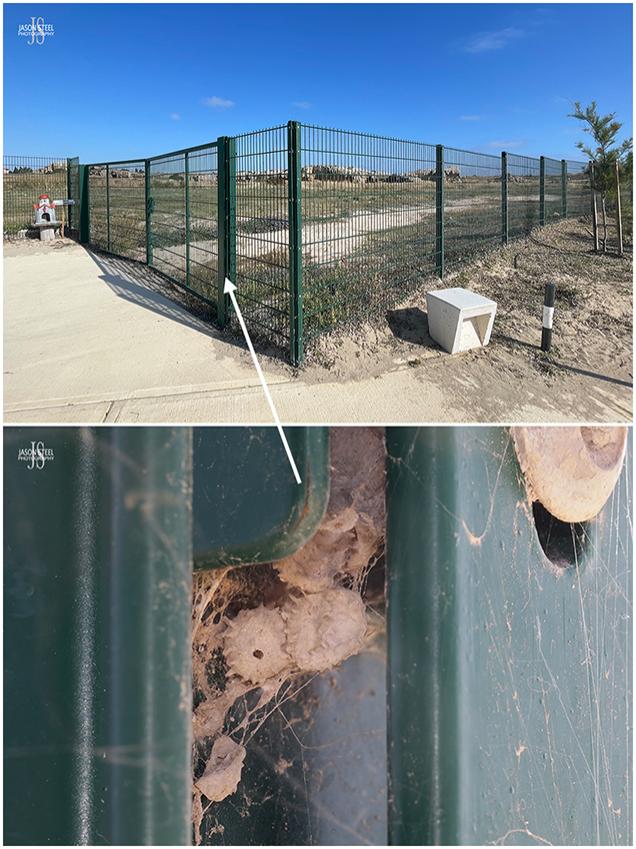
Brown Widow webs, containing spiders and egg-sacs, on the metal fencing along the coastal Broadwalk in Paphos. May 2025.
The webs of Brown Widows, some of which contained both spiders and egg-sacs, were present at several points on the metal fencing that ran along the Paphos Broadwalk.
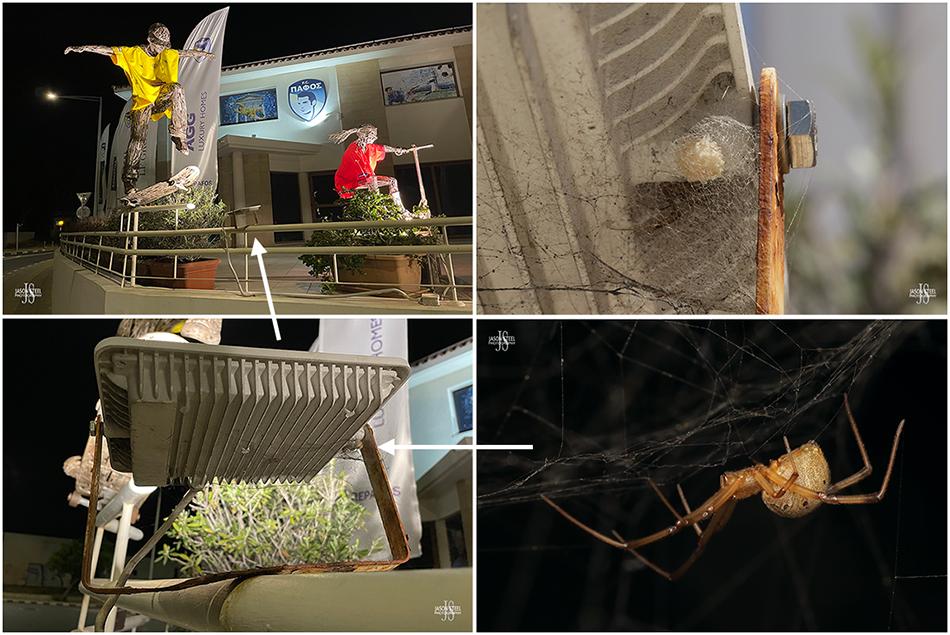
Brown Widow under a floodlight, at the Paphos FC building on Tomb of the Kings Rd, Paphos. May 2025.
The Paphos FC building was one of about a dozen locations where I spotted Brown Widow webs, around buildings, along the Tomb of the Kings Rd, in Paphos. At night Brown Widow spiders could be seen hanging upside down in their webs. During the daytime the spiders were hidden away and it was difficult to tell which of the webs were still occupied.
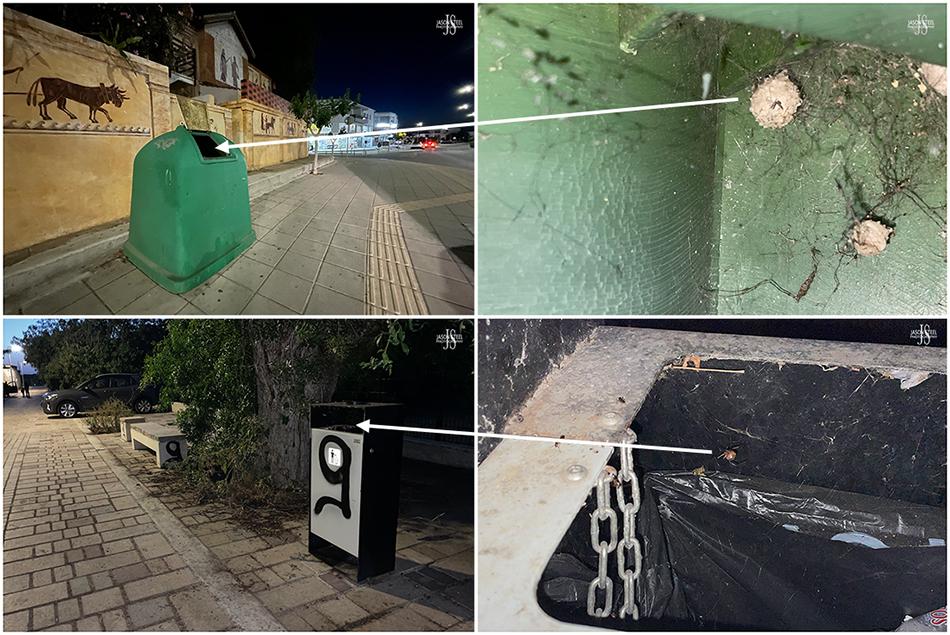
Brown Widow spider and egg-sacs in public waste bins and recycle bins. Paphos. May 2023 & 2025.
It's extremely common to find webs, spiders and egg-sacs of Brown Widow in public waste bins and recycle bins in Paphos town. Refuge and waste disposal workers are particularly at risk from bites to their hands as many of these spiders can be found in their webs under the handles of these bins.
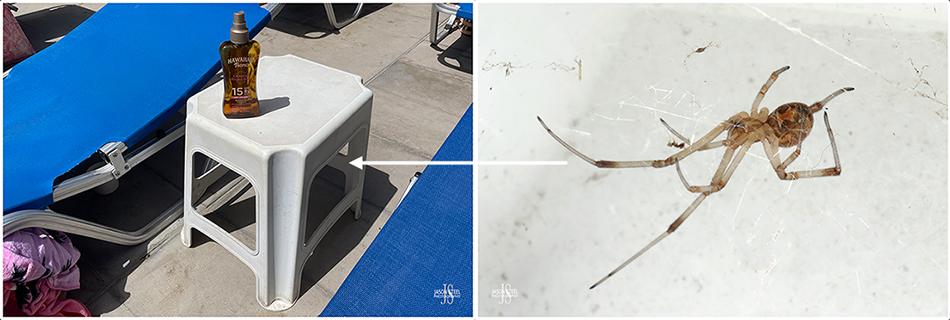
Numerous Brown Widow spiders, and egg-sacs, under sun-loungers and pool-side furniture, found at 3 different hotels. May 2025.
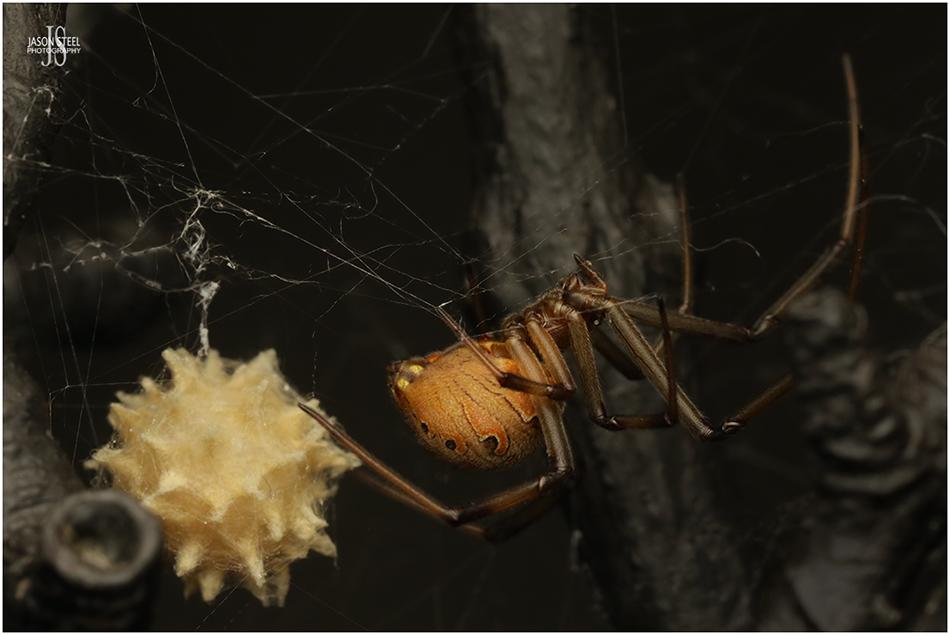
Brown Widow with egg-sac. Found on the Paphos Broadwalk, along the Paphos coastline. May 2025.
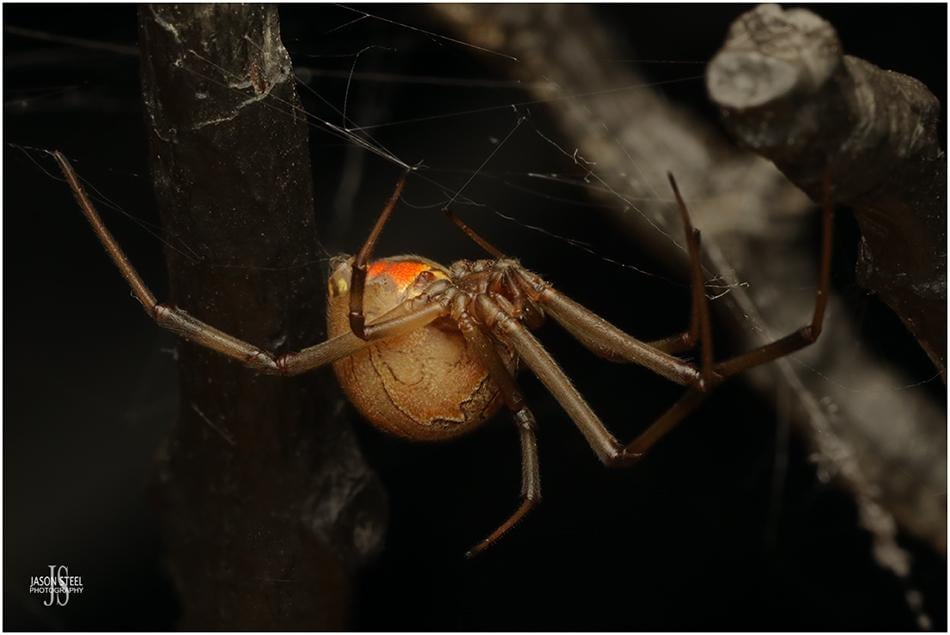
Gravid female Brown Widow. Found on the Paphos Broadwalk, along the Paphos coastline. May 2025.
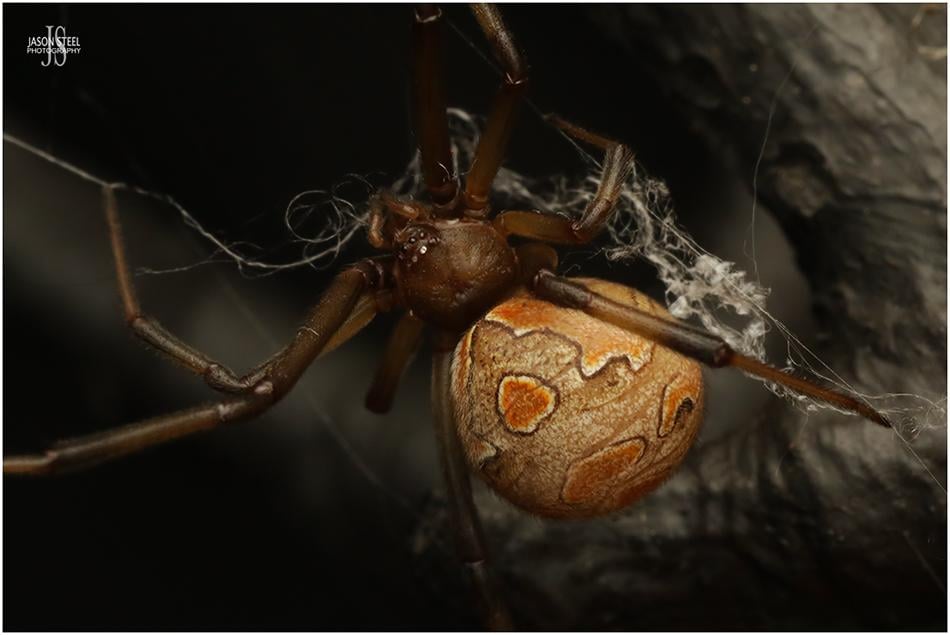
Gravid female Brown Widow. Found on the Paphos Broadwalk, along the Paphos coastline. May 2025.
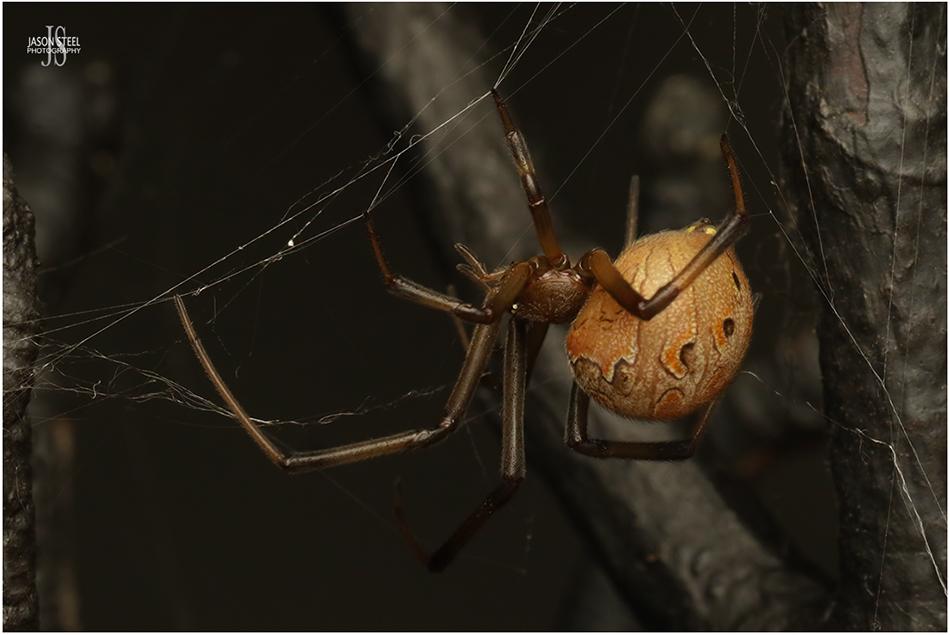
Gravid female Brown Widow. Found on the Paphos Broadwalk, along the Paphos coastline. May 2025.
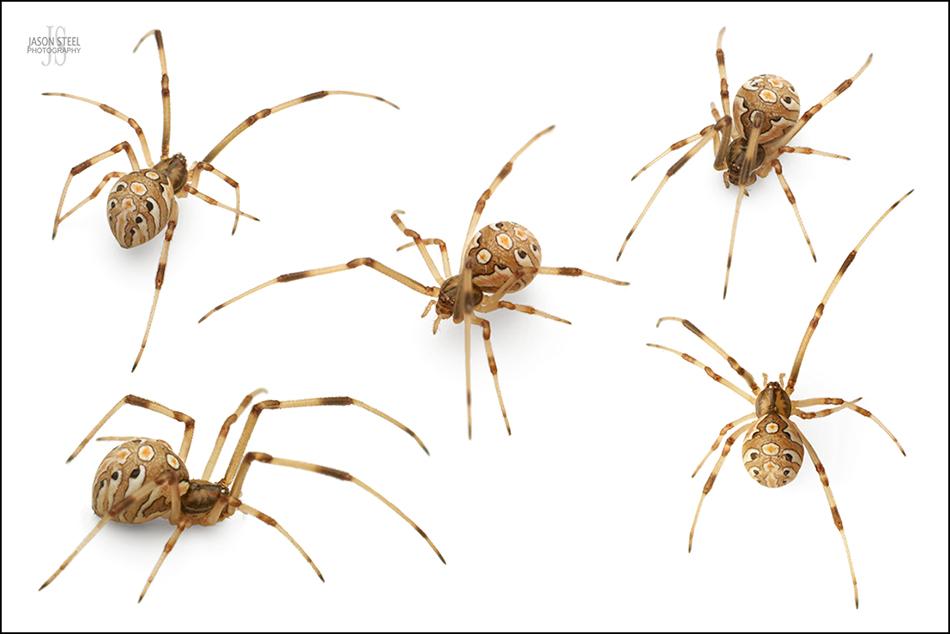
5mm sub-adult female Brown Widow found in Paphos, September 2023.
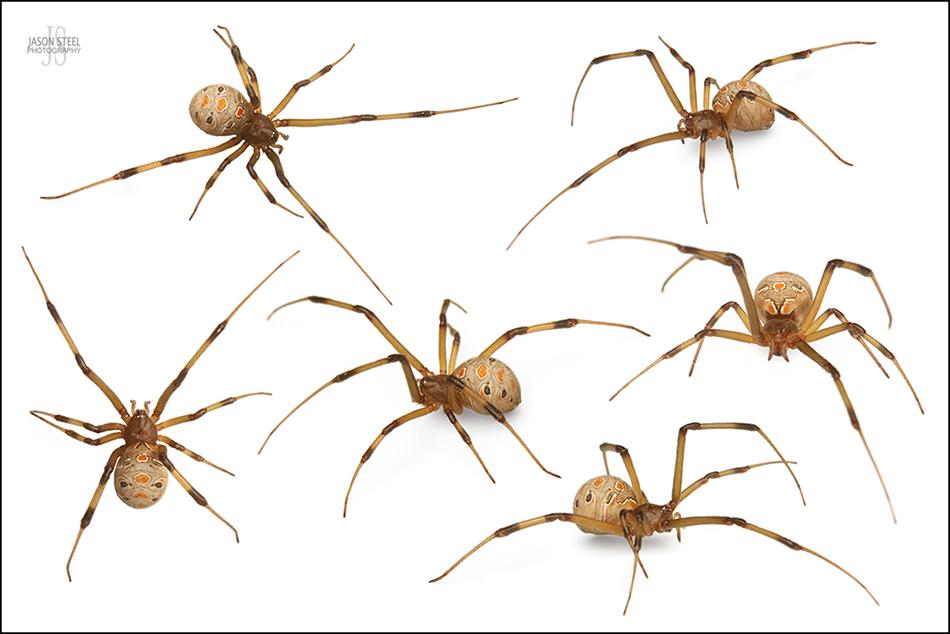
8mm adult female Brown Widow found in Paphos, September 2023.
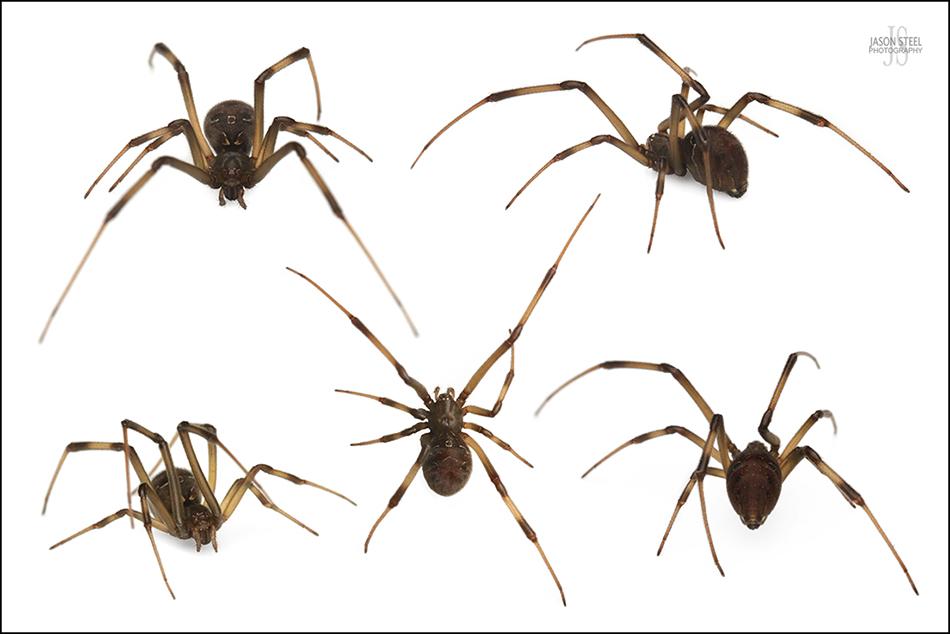
9mm adult female Brown Widow found in Paphos, September 2023.

3mm adult male Brown Widow found in Paphos, September 2023.
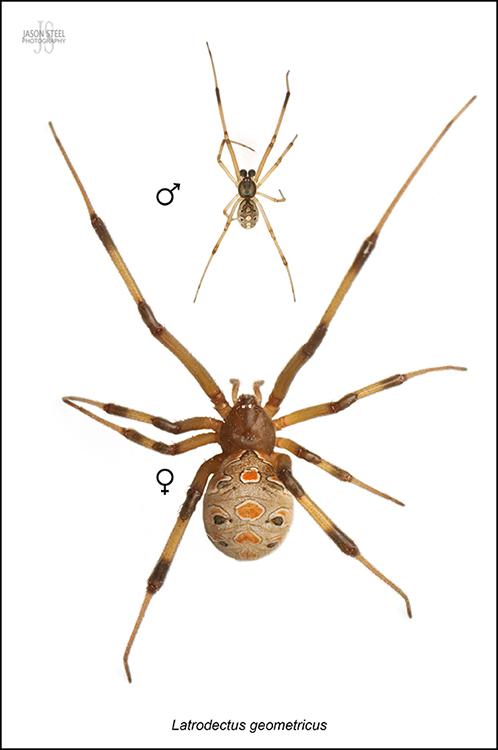
Male and female Brown Widow spiders.
As demonstrated in this image the adult female Brown Widow is considerably larger than the adult male.
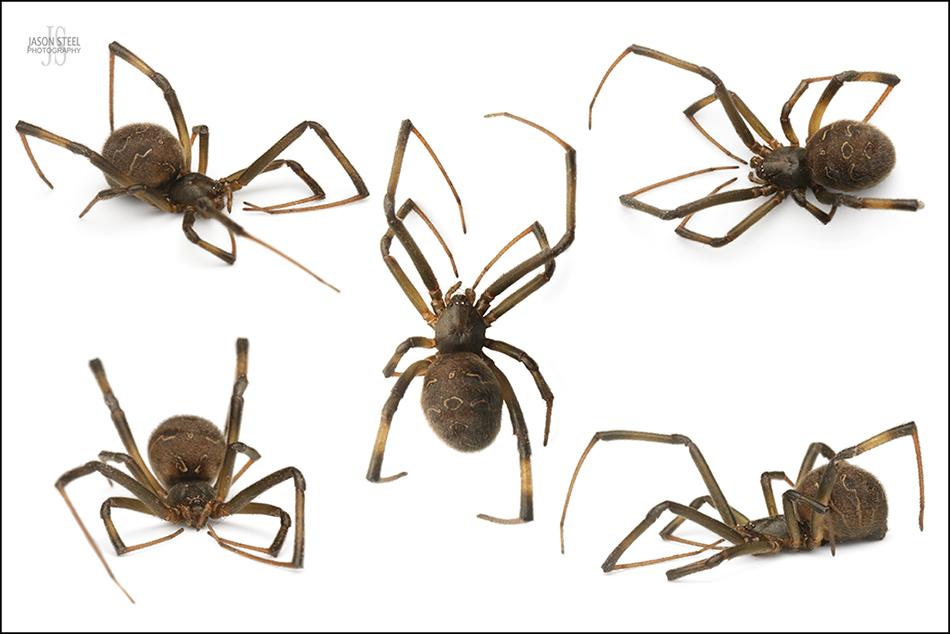
Deceased 10mm adult female Brown Widow, Latrodectus geometricus, accidentally imported to the UK amidst white grapes from Peru, South America, 4th December 2023

Close-up view of the typical orange hourglass marking, and the epigyne, of a deceased 10mm adult female Latrodectus geometricus. 7th December 2023.
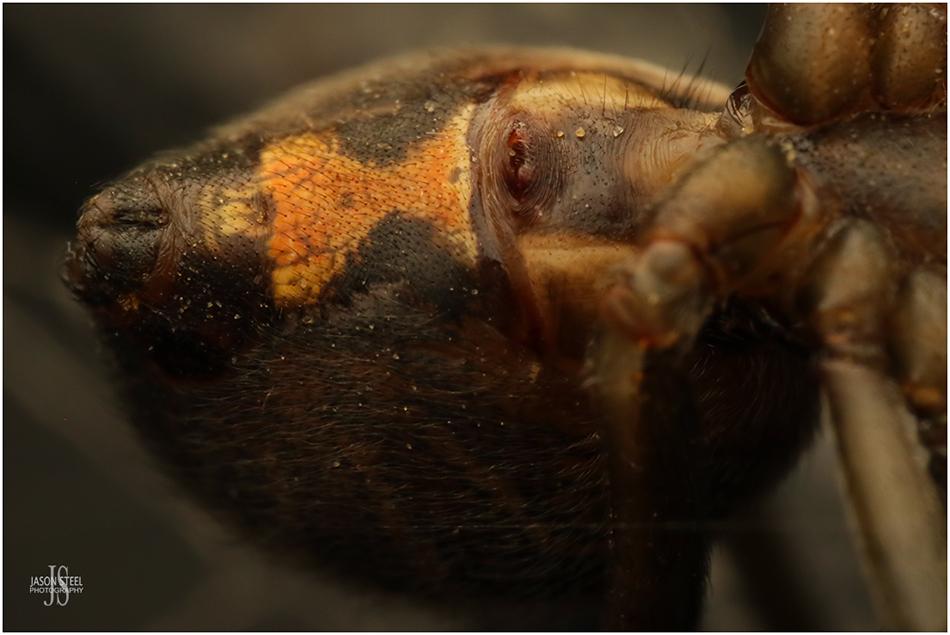
Close-up view of the typical orange hourglass marking, and the epigyne, of a deceased 10mm adult female Latrodectus geometricus. 7th December 2023.
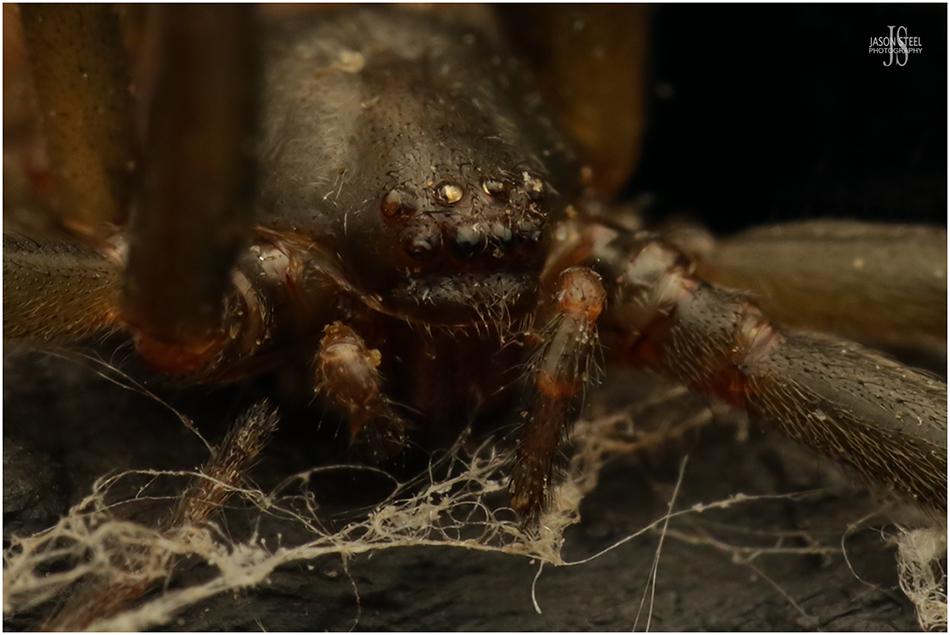
The eye arrangement of a deceased 10mm adult female Latrodectus geometricus. 7th December 2023.
As with all Latrodectus species, this image of an adult female Latrodectus geometricus highlights one key feature to help distinguish between Latrodectus and Steatoda species. Notice the obvious gap between the posterior lateral eyes and the anterior lateral eyes. When looking at Steatoda species we find that the PL eyes are touching, or very nearly touching, the AL eyes.
Brown Widows Failed to become established in Thailand
In 2023 I had a discussion with an arachnologist, who was a resident of Thailand, about the inability of Latrodectus geometricus to become fully established in that country. The resident made the following remarks:
"We had an invasion of Latrodectus geometricus here in northern Thailand. Under chairs in restaurants, under cabinets and so forth. Numerous multiple sacs typical of the species. I monitored them pretty closely over an area of about a square mile. Over the period of about a year their numbers diminished until I couldn't find any. Three or four years on and none can be found.
So why? They were able to establish themselves for a short period of time but then died off. Predation from local animals? Environment? The only guess I venture is they were unable to reproduce in outlying areas where pesticide use is less frequent. But all Latrodectus are pretty tolerant of pesticides. So our predators, sparassids and geckos overwhelmed them - sitting duck targets in their webs? Or . . ?The only cobweb weavers that thrive here are the pholcids. From observation, they appear to be the ultimate survivalists, able to survive on a gnat or two once a month, and tolerate extreme hot, dry and arid areas, as well as very damp and humid areas too."